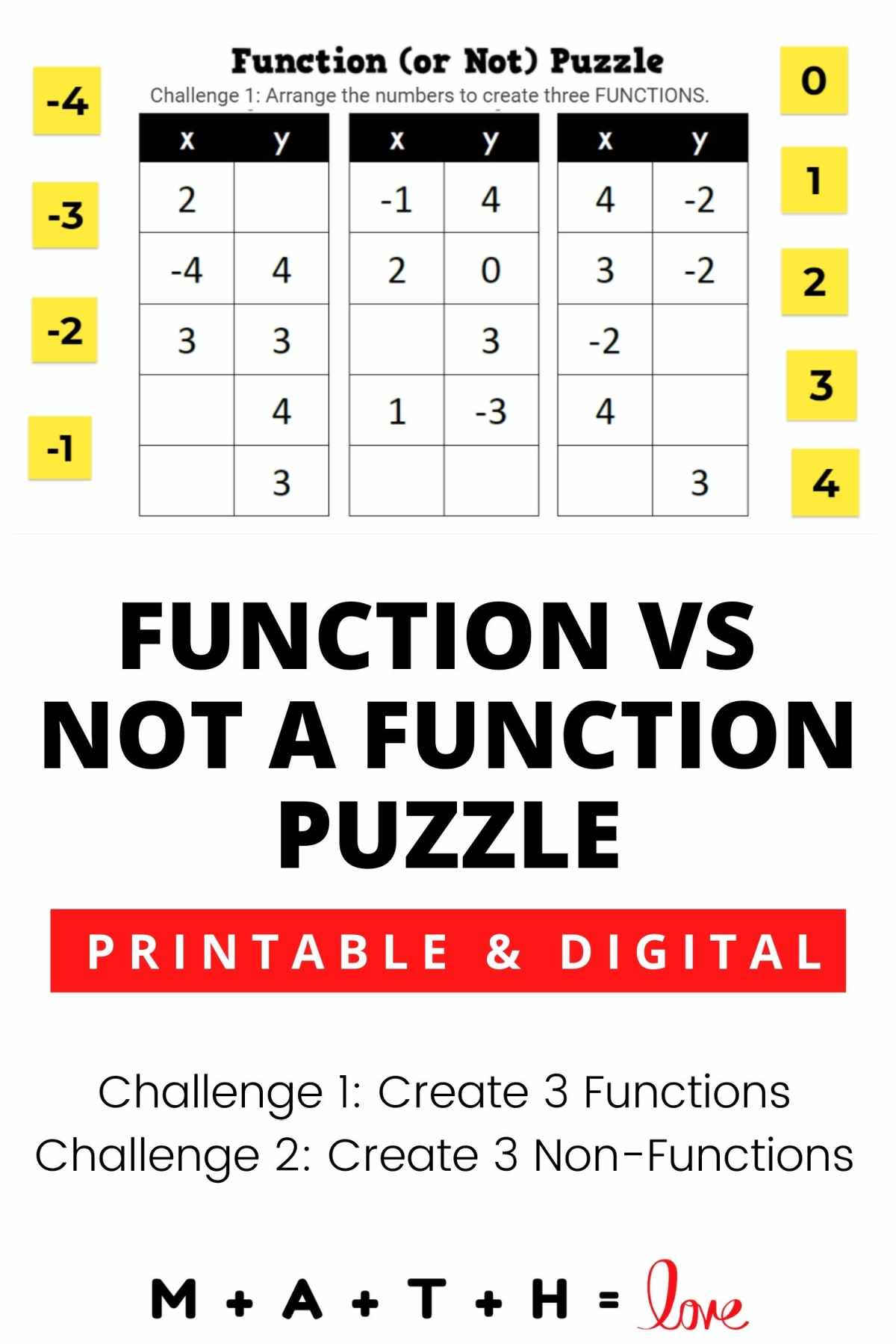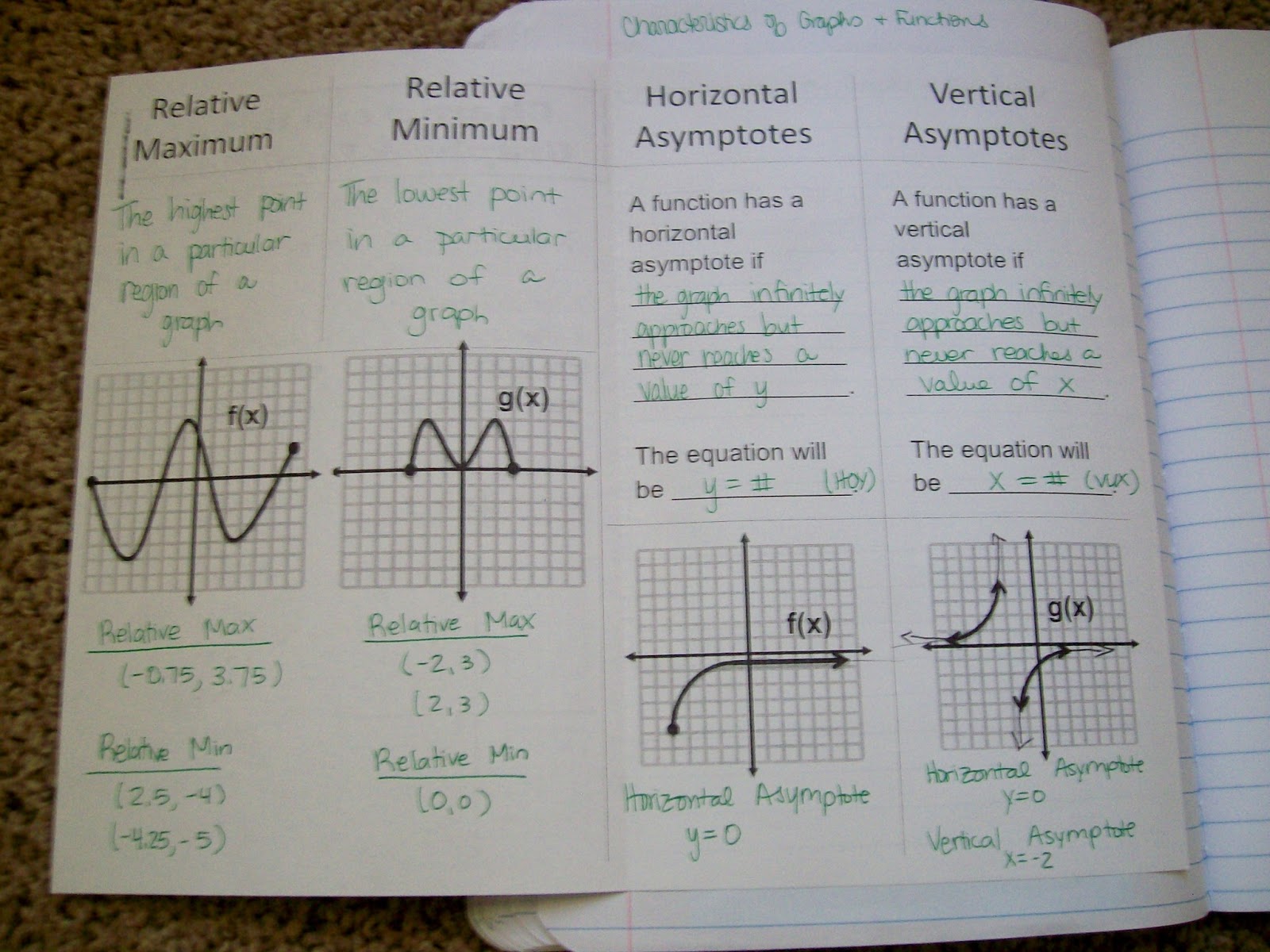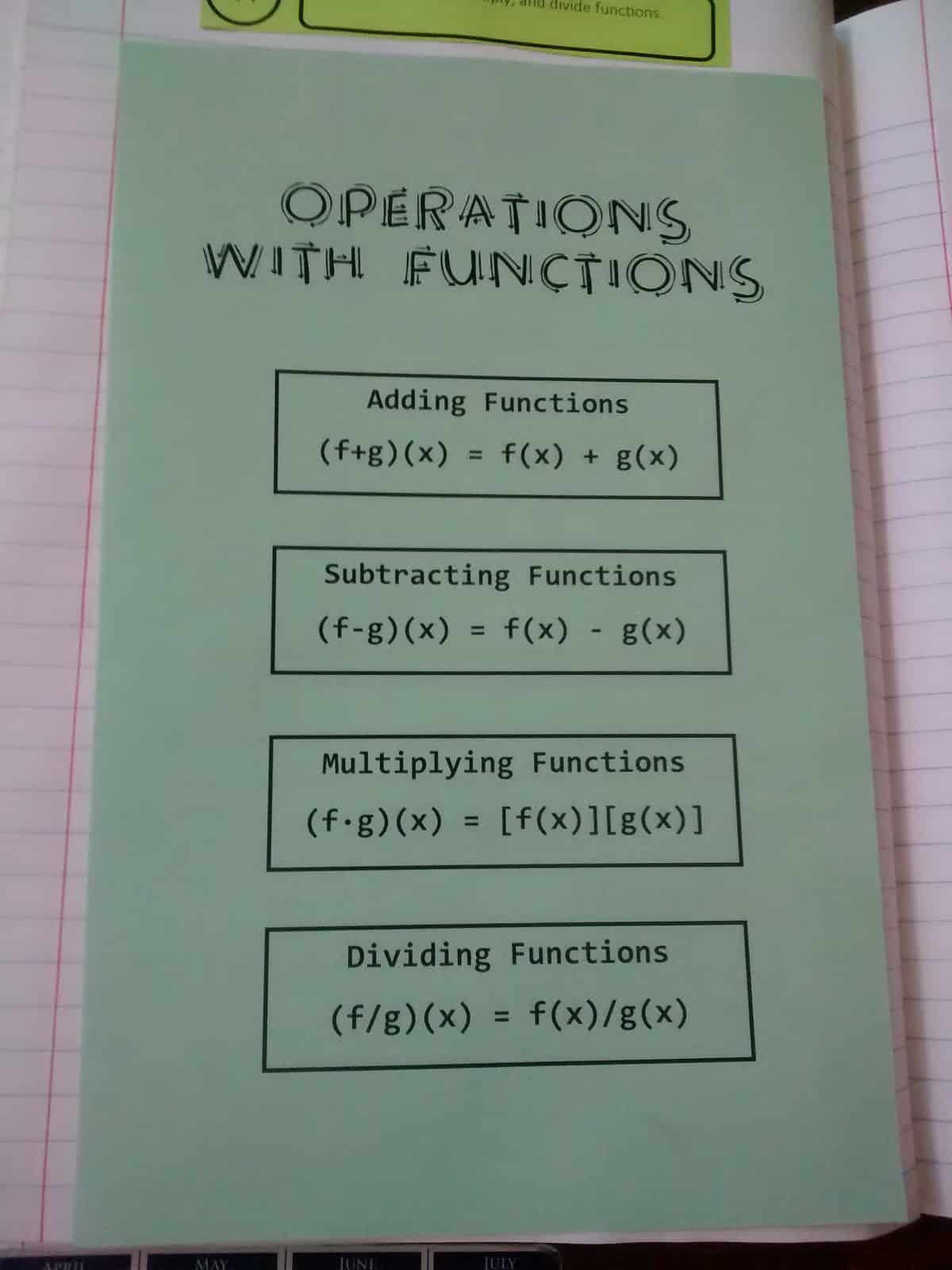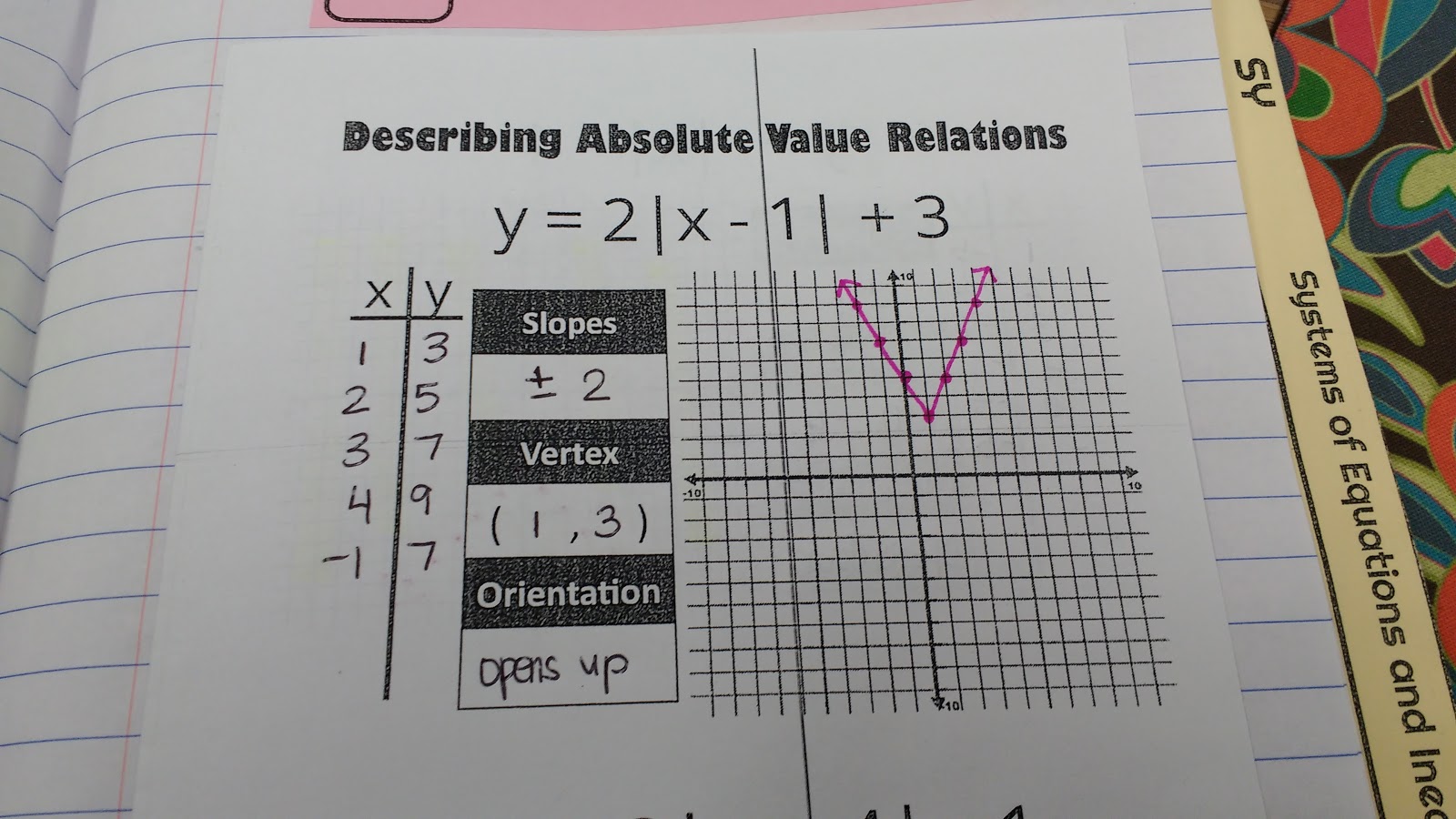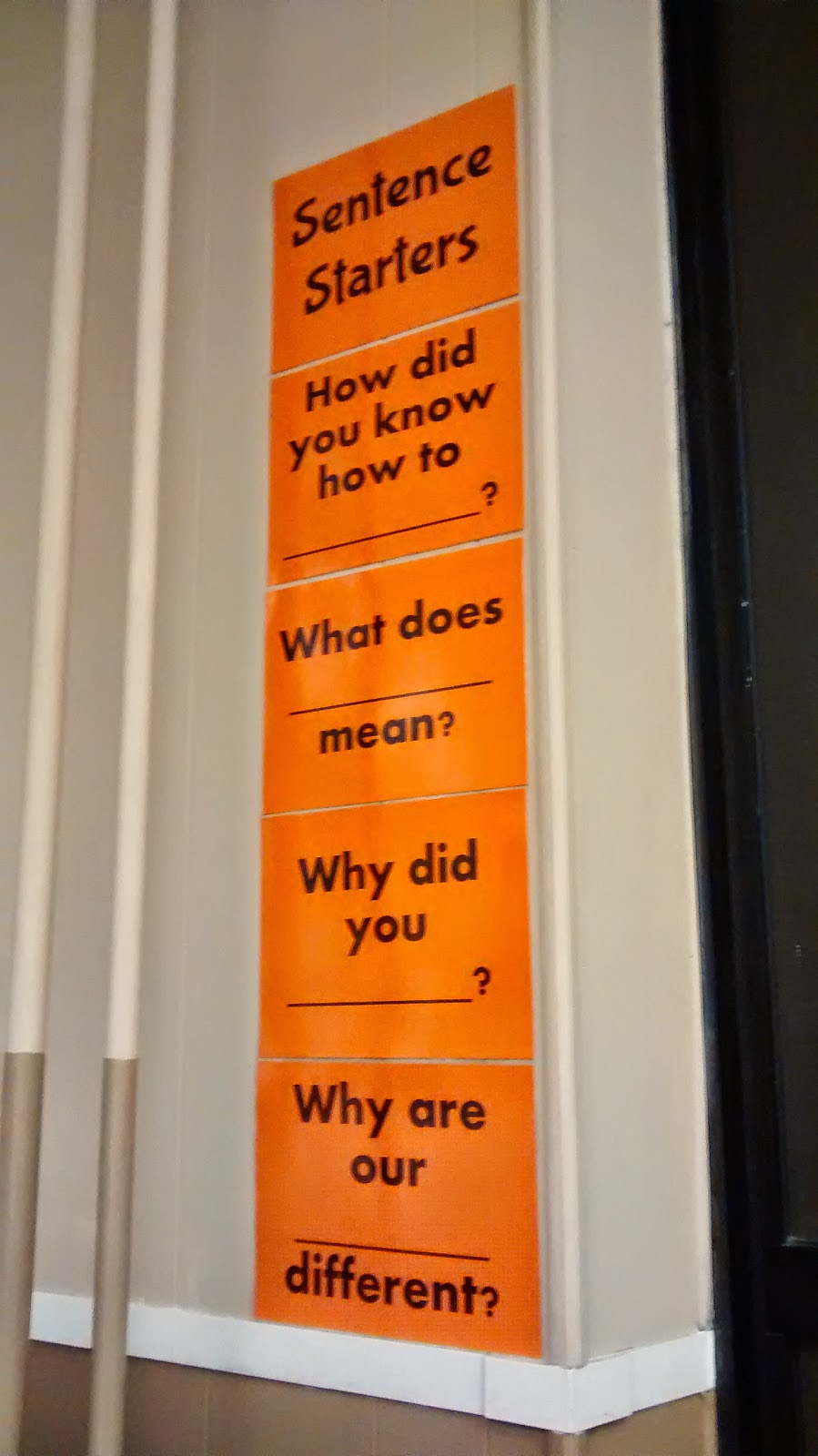Investigating Effective Remediation of Integer Operations at the High School Level [Action Research Project]
This blog post contains Amazon affiliate links. As an Amazon Associate, I earn a small commission from qualifying purchases.
The most challenging/frustrating/satisfying part of my master’s program in curriculum and instruction was my action research project. We were asked to consider an issue we saw in our school and design a research project to investigate it. I chose to focus my research on the remediation of integer operations since it is an area where my students struggle each year. Specifically, I decided to compare the impacts of two different forms of integer remediation: use of the number line model and use of memorized rules.
If reading educational research is your kind of thing, I’ve posted the entirety of my (56 page) action research project at the bottom of this post. I’ve titled it “Investigating Effective Remediation of Integer Operations at the High School Level.”
I have to say I’m a bit hesitant to post my research project. Are there typos? Probably. I know I’ve already corrected a few for this blog version that I didn’t catch before turning in my final version to my professor. Oops. Was the research project flawlessly executed? No. To be honest, I don’t even know what some of the statistical calculations I was supposed to do even mean. Should I be admitting that? Probably not. But, I can say that I definitely learned a lot through the process.
If I was to plan another action research project, I think it would go a lot smoother because I think I’ve finally wrapped my head around what a project like this entails. One of the problems with doing my master’s degree online was that we didn’t receive a whole lot of feedback as we were planning our research projects. My project changed shape and form so many times throughout the year and a half I worked on it. I went into the project knowing I wanted to do something with integers and nothing more.
It wasn’t until I started collecting data that I realized I needed to be a bit more focused. As a result, I ended up collecting a lot of data that I didn’t end up using at all. Oops… Since I am a perfectionist, my first instinct is to be happy I’m done with this project and store it away on a shelf to collect dust since it’s not perfect. But, that’s not what the #MTBoS is about. We don’t share things because they’re polished and perfect. We share things because we want to become better teachers and help others become better teachers at the same time.
So, without further ado, here’s a peek into my research. My last assignment for my last class was to create a PowerPoint presentation to summarize my action research project. These slides don’t tell the entire story. So, if any of this interests you, remember that there’s a link to the entire paper above.
Through my research, I attempted to answer three questions:
- At the high school level, does the use of the number line model result in more effective remediation of integer operations than the use of rules to be memorized?
- Is the use of the number line model more effective in the remediation of integers with students enrolled in higher-level math classes?
- At the high school level, does the use of the number line model lead to a greater retention of integer operation skills than the use of rules to be memorized?
Before I could collect data, I did have parents complete a permission slip.
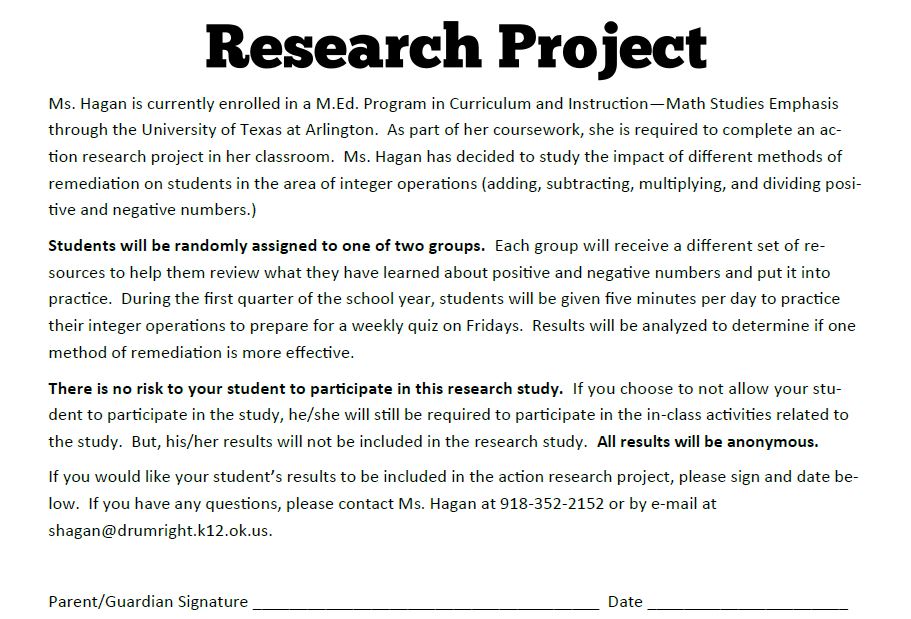
Students were given a pre-test consisting of 50 integer operation questions that needed to be completed in 5 minutes.
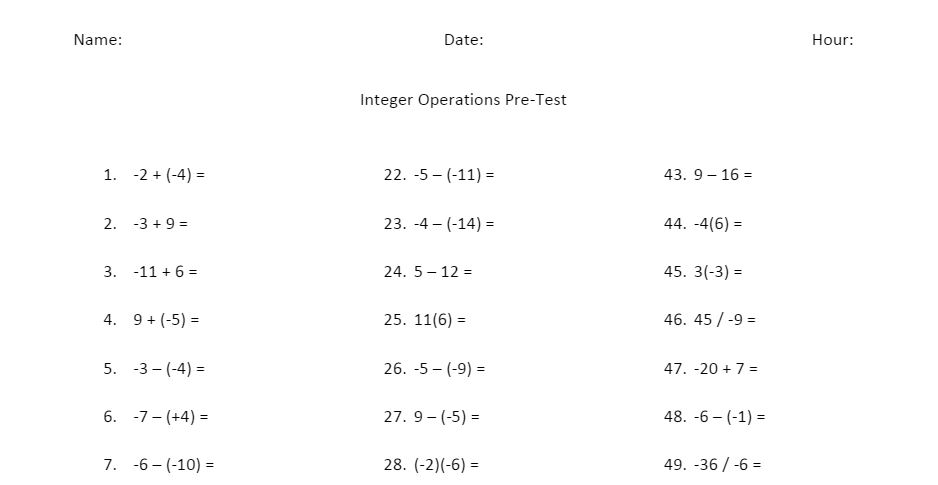
Students were placed in two different treatment groups. One group would receive remediation on integer operations that consisted of a review of the rules they needed to memorize. The other treatment group would receive a much more conceptual/hands-on approach to integer operations remediation using the number line.
Here was my process for splitting my students into the two different treatment groups:
- Grade pre-tests.
- Input scores in excel.
- Sort scores from highest to lowest.
- Take the top two students. Randomly assign the first student to one of two treatment groups.
- Place the second student in the other group.
- Take the next two students. Randomly assign the first to one of the groups.
- Place the second student in the other group.
- Repeat until all students are assigned to a group.
I had my student aide help me grade a lot of these integer tests. Her mind was blown when I folded over the answer key to make grading easier!
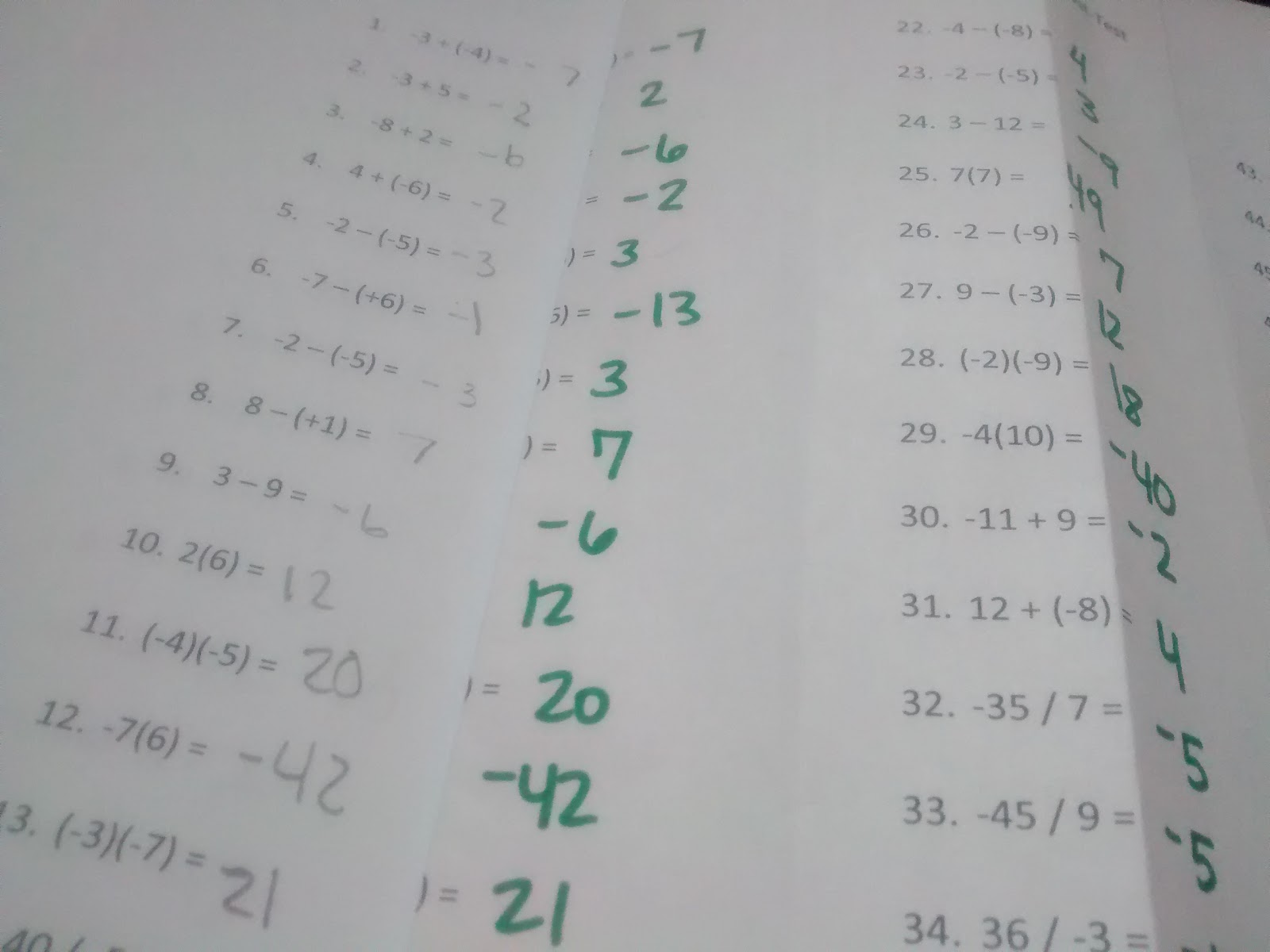
I created two sets of notes. One group of students received notes that reviewed integer operations in a very rule based manner. The other group of students received notes that encouraged them to use a number line model to solve integer operation problems.
Here are the rule based notes:
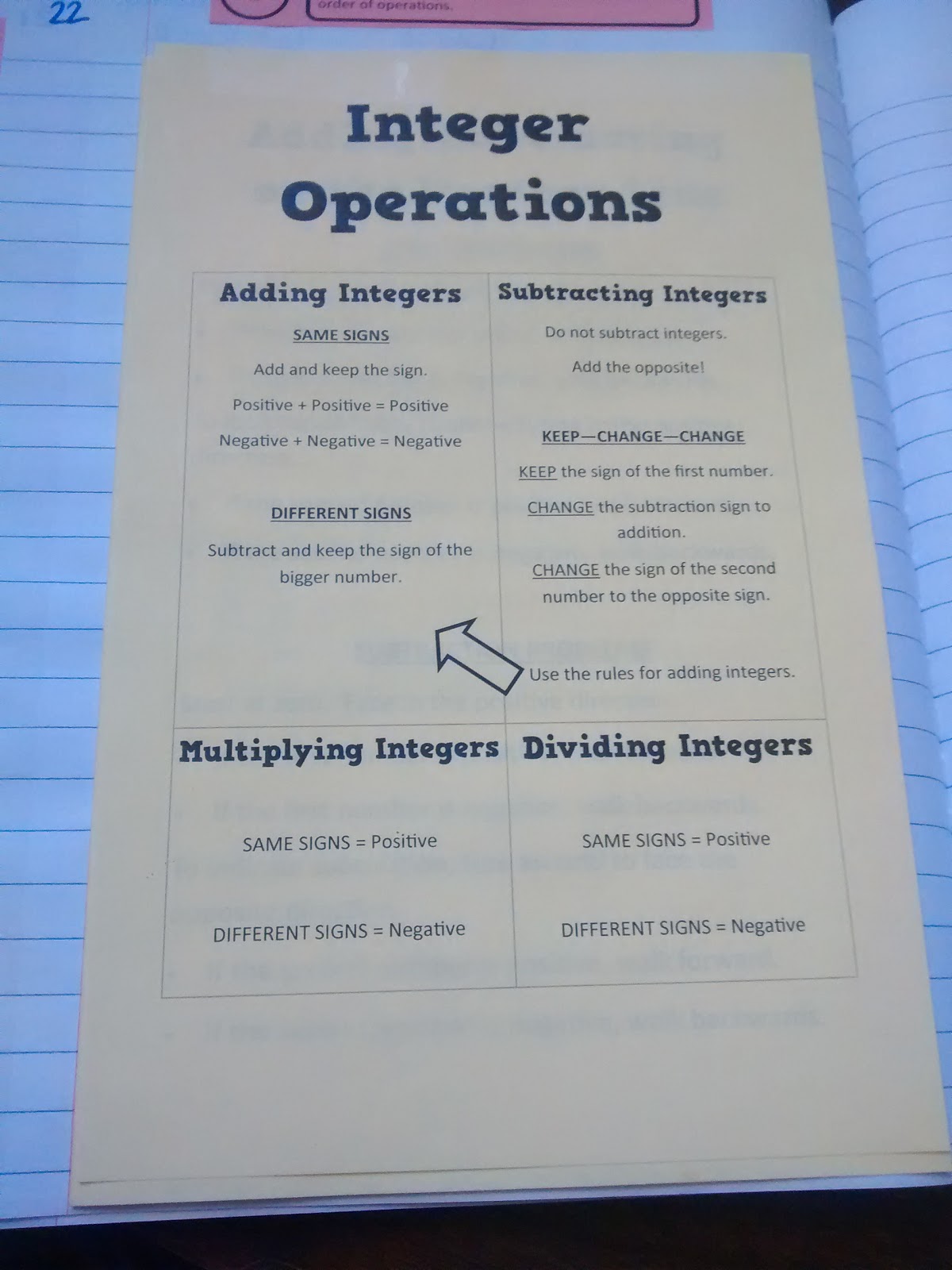
And, here are the number line notes:
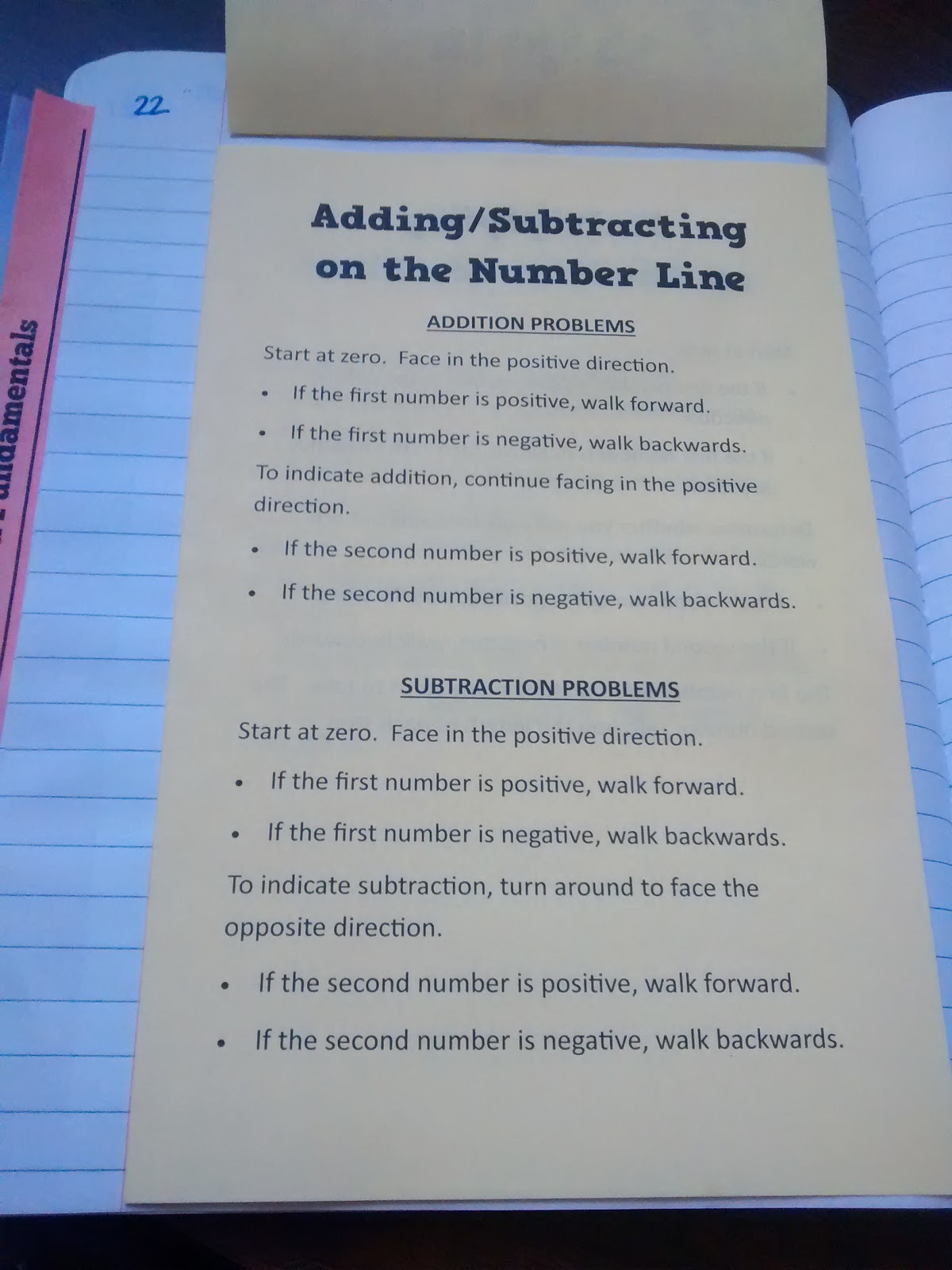
These were adapted from a resource I found online and have subsequently lost. The notes featured printable pi shaped playing pieces to practice adding/subtracting on the number line. I wrote my own notes for multiplication/division because I couldn’t find any that focused on number lines.
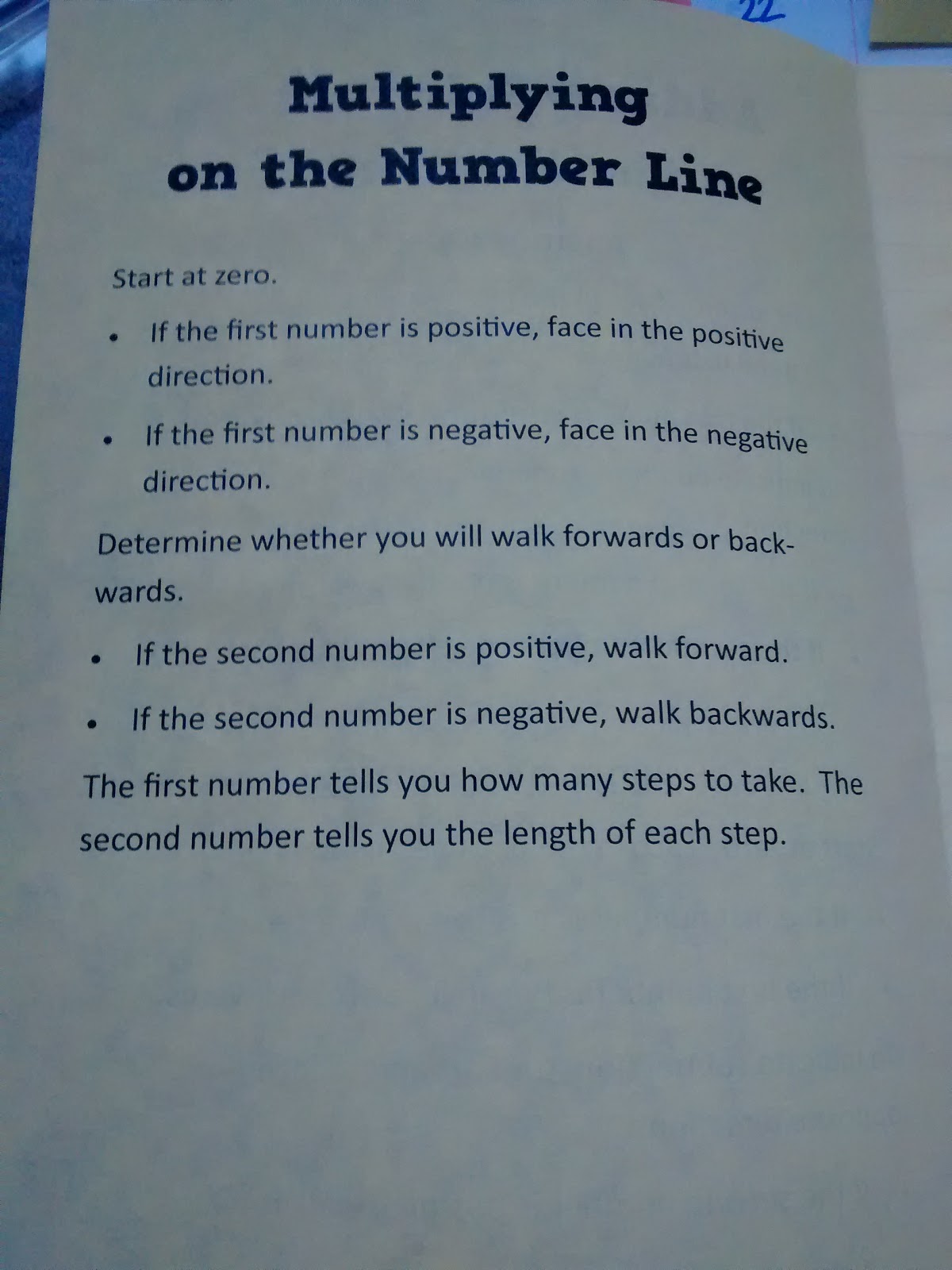
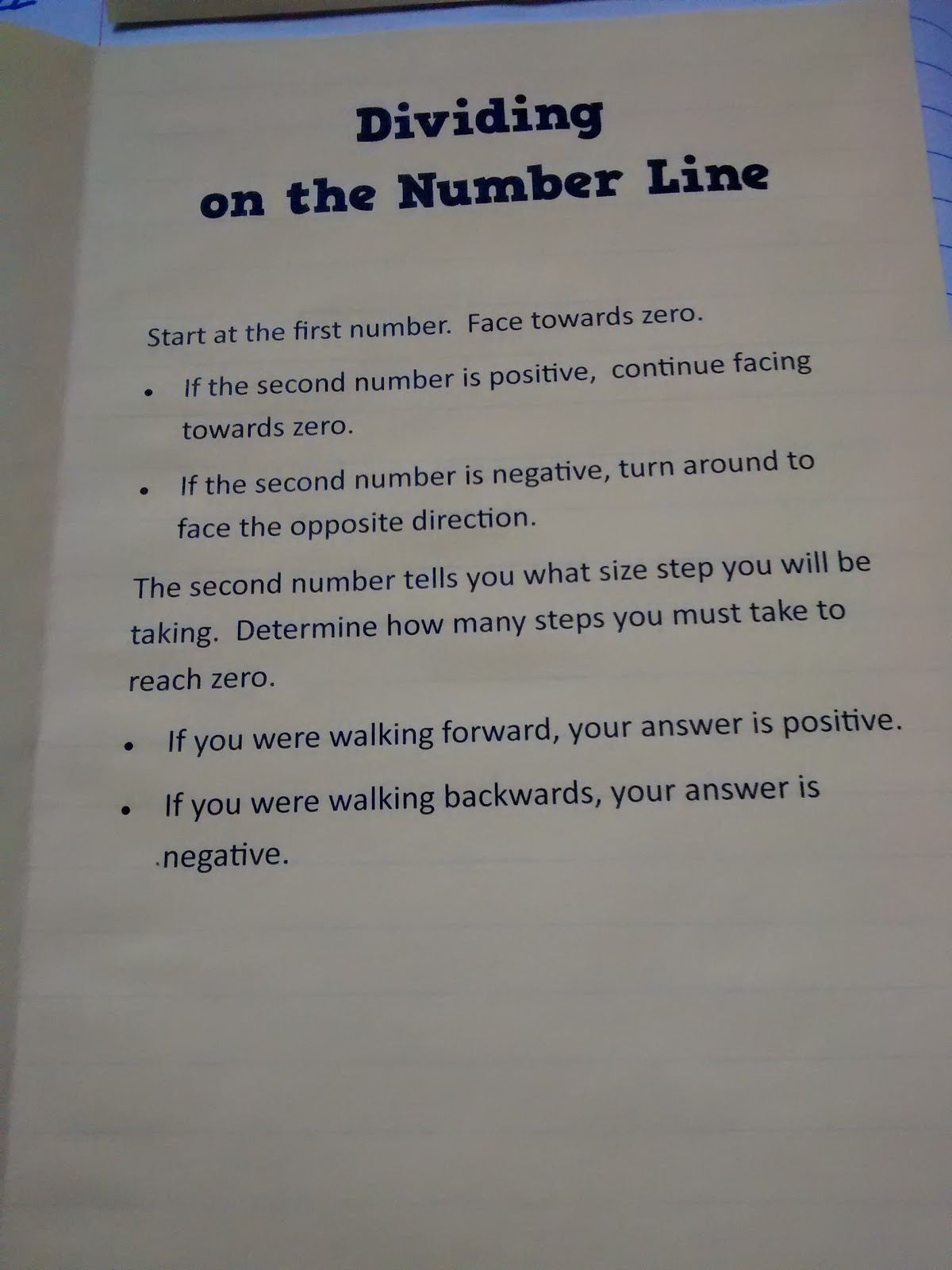
Students in the second group also got a number line and a bingo chip with an arrow drawn on it.
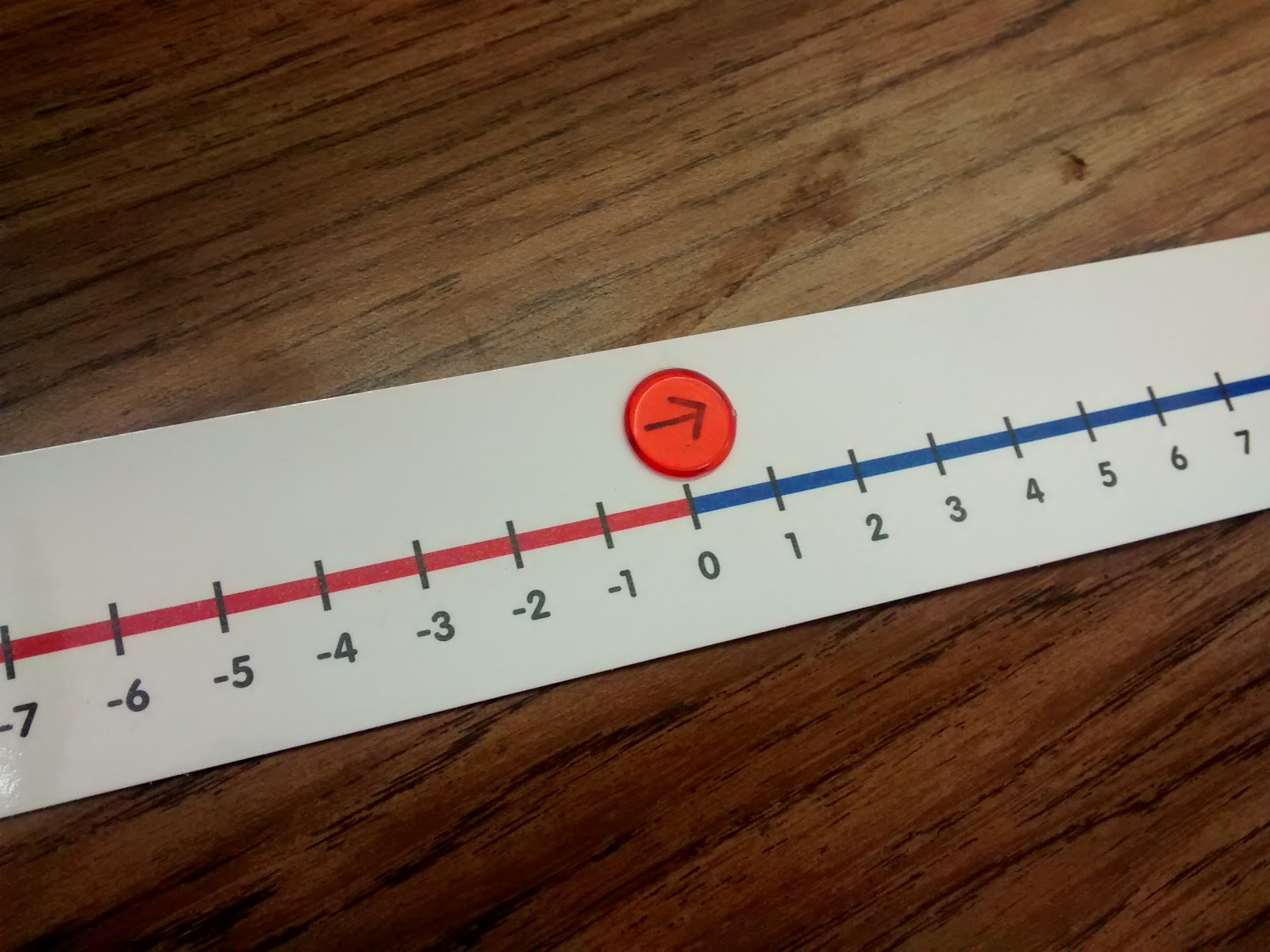
My project requirements meant that students in each class period needed to be in each treatment group. Therefore, whole-class remediation was out. The remediation process needed to be self-guided.
Students also added a horizontal number line to their interactive notebooks. Students were instructed to cut out the rectangles including x’s. The remaining tab glues in the back cover of the composition notebook. The number line then folds down and in to be hidden when not in use. If you’re confused, here’s a post about the vertical number lines my students glued in last year to help them with slope.
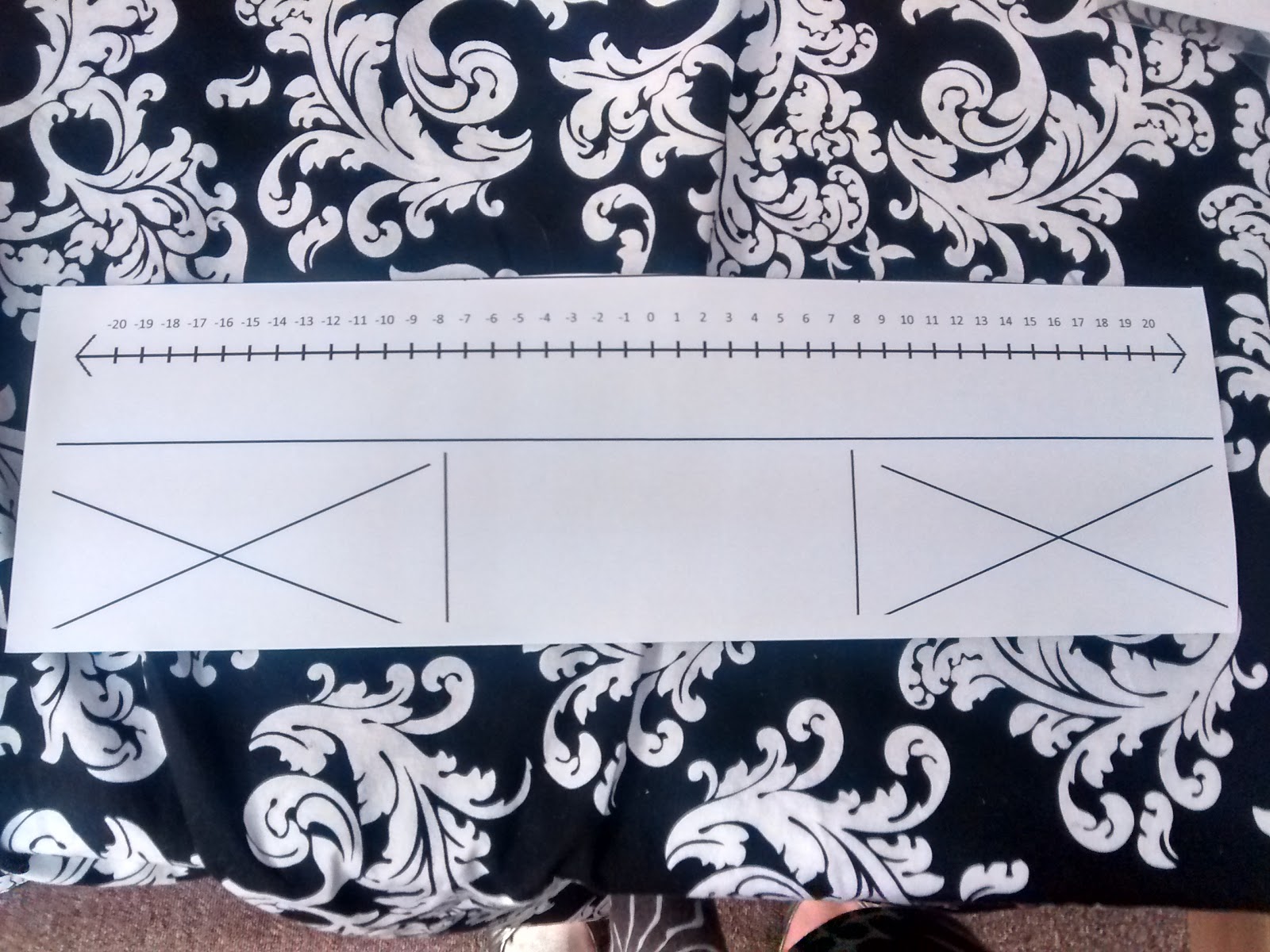
Are these notes perfect? Absolutely not. Having had students use them, I see so many ways to possibly make them better. Use your judgment. You know best what your students need.
On Tuesdays, Wednesdays, and Thursdays, I set the SMART Board timer for 5 minutes and passed around the flash card bucket.
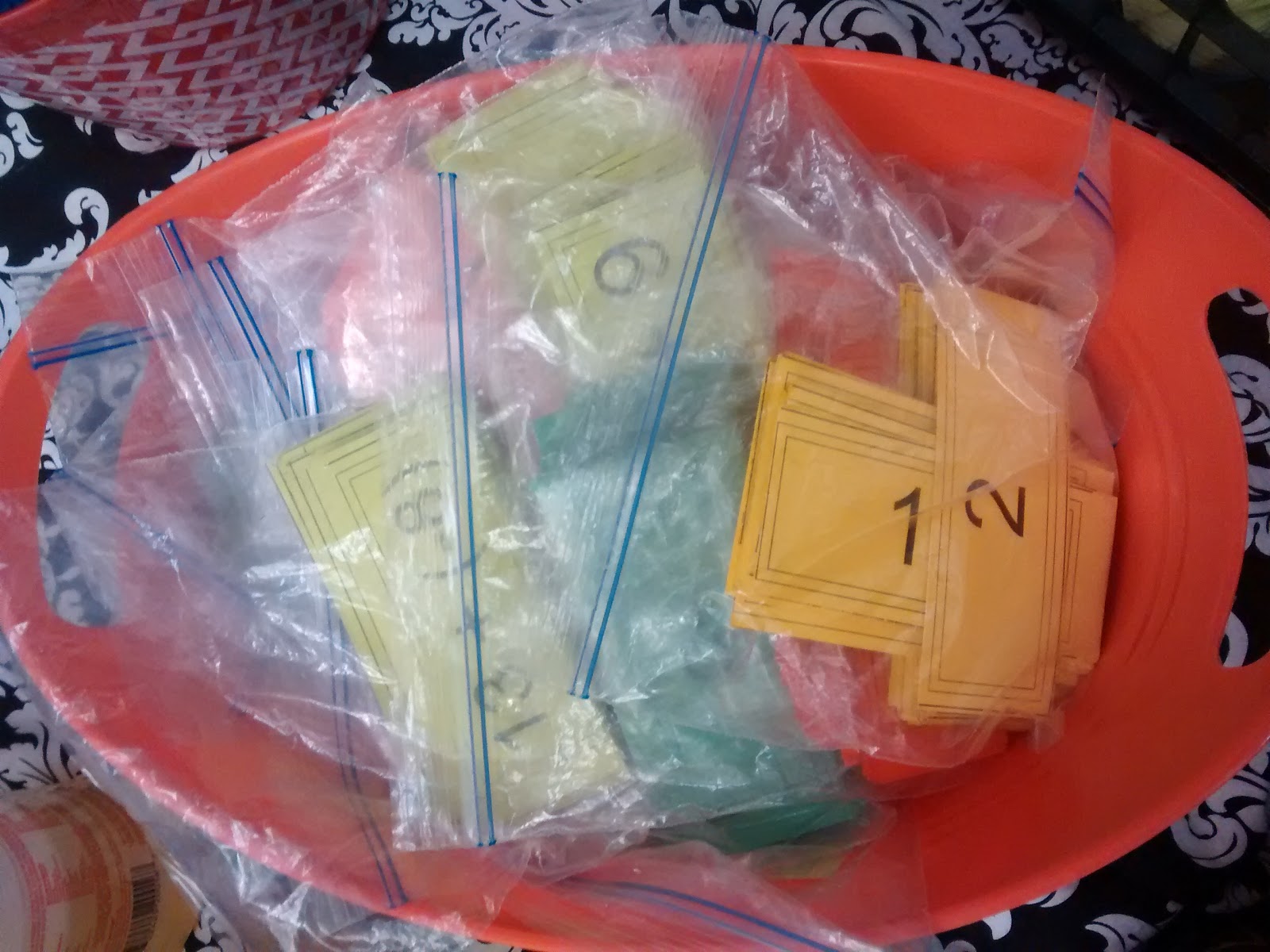
Each bag has 48 flash cards. These 48 problems were taken from the 50 question pre-test. Students work through the flash cards while referencing their notes sheet. Students with number lines should use the number line and chip to act out each question. As students gained confidence, they only used the manipulatives on questions they struggled with.
I chose to use flashcards instead of a worksheet or other activity because of the fact that they allowed students to check their answers themselves and ask for help when needed. When I went around to answer student questions, I always referred them back to their note set as I explained.
On Fridays, students took the pre-test again as a check-up. Tests were graded. Scores were recorded. On Mondays, students got their tests back to correct. Students used their notes to rework any questions they got wrong, and they used the rest of their daily 5 minutes to complete any problems they didn’t get to.
Monday – Redo missed problems on test
Tuesday – Flash cards
Wednesday – Flash cards
Thursday – Flash cards
Friday – Test
After doing this for three weeks, I wrote a post-test for students to take. Students took the regular test on a Friday. On Monday, I gave them a test with new questions. The purpose of this was to ensure that students had not somehow memorized the 50 answers to the pre-test/weekly check-up test/flash cards. I told them if they had memorized the answers to all 50 questions in order, I would be very impressed!

I typed up a short reflection sheet and used mail merge to import each student’s scores for each test. I typed up this form rather hastily, and it shows. Oh well…
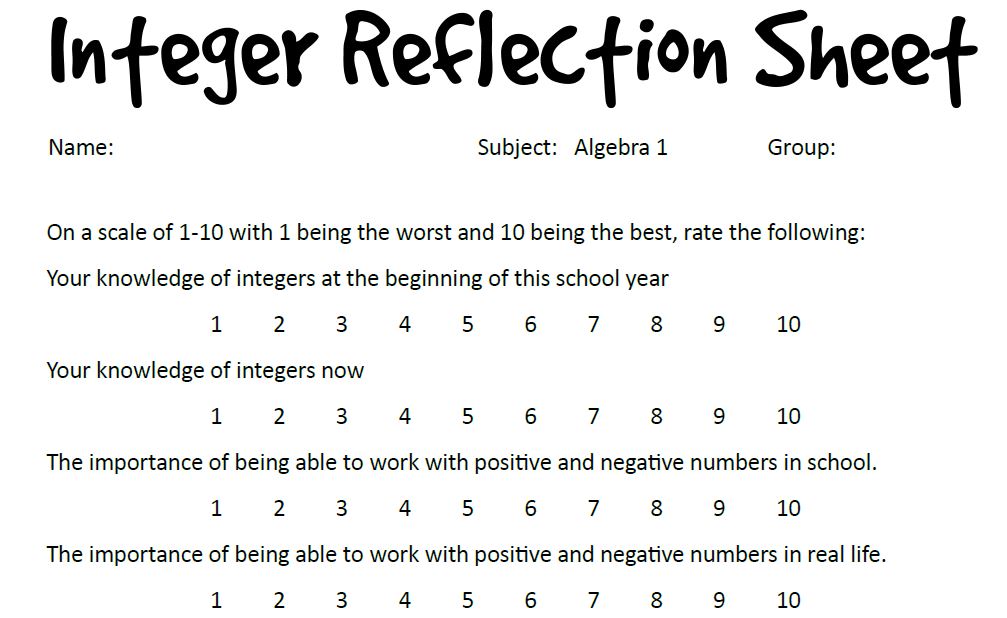
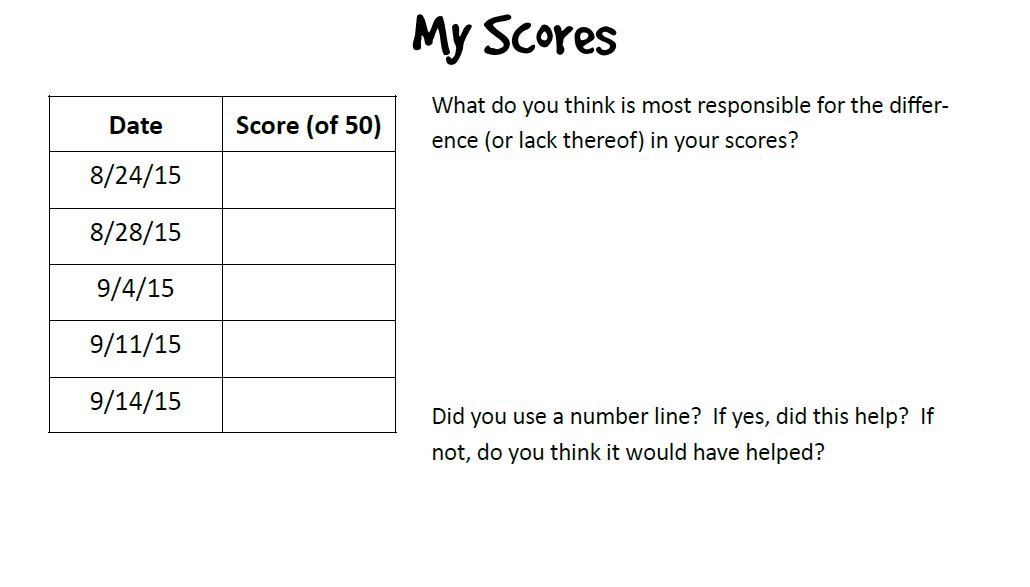
I was a bit disappointed in how little detail students used in answering the last two questions. 🙁 I was hoping I’d be able to pull some good quotes from there to use for my research project!
I found it interesting that none of my students seemed happy about what group they got placed in. The students with number lines thought they were dumb and annoying. The students without number lines felt cheated. It absolutely broke my heart when I heard a student claim that I had only given him a number line because he was a special education student. I want my students to see a number line as a tool that they should all be using.

Many of my students who weren’t in the group that received the number line instructions still made use of the number line on the wall on occasion. They asked if this was okay. Absolutely! My project just dictates what instructions I give you. They were welcome to solve the problems in whatever way they chose.
Overview of Research Project

Outline

Introduction

Problem

Background Information

Significance of Study

Purpose of Study

Review of Literature

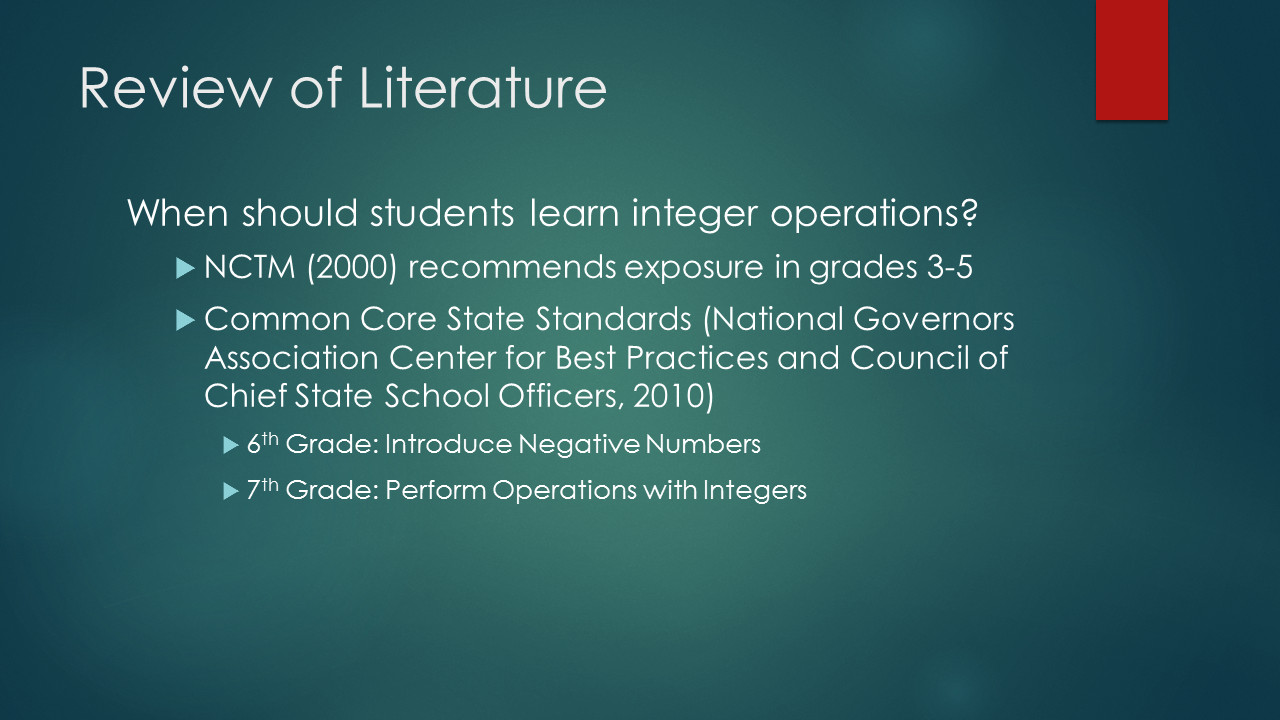



Setting & Participants
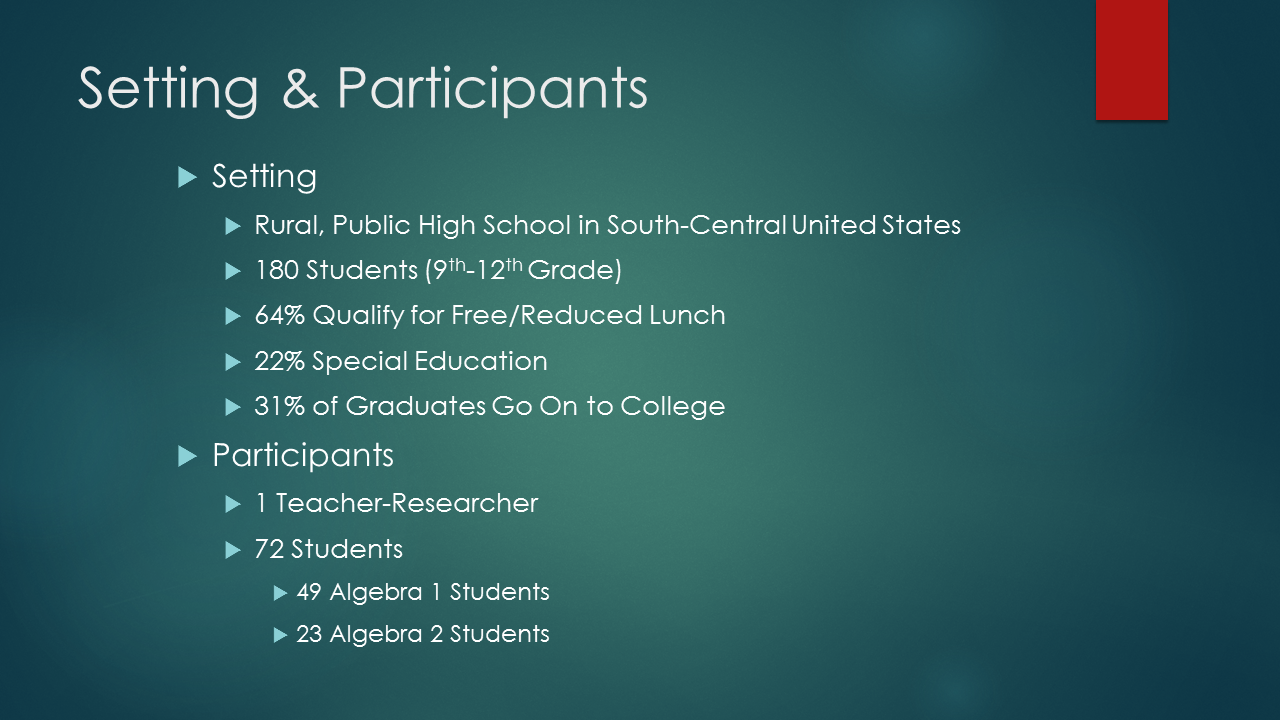
Research Design
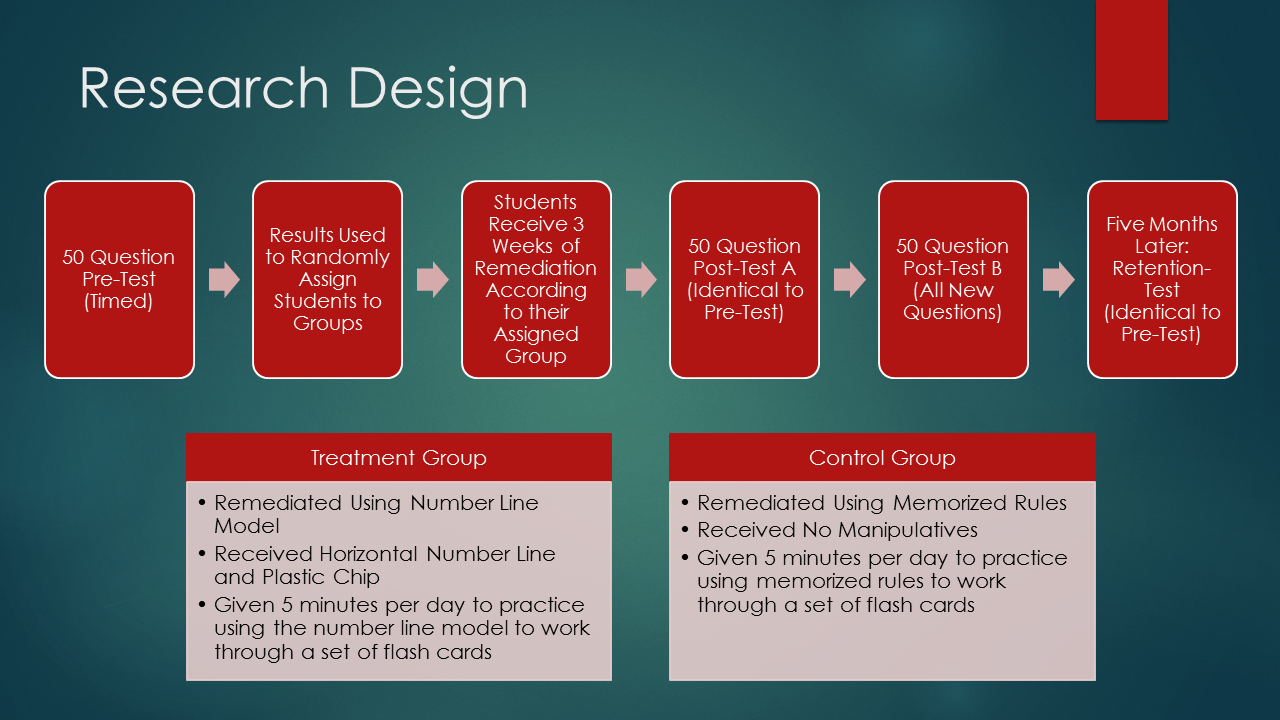
Data Collection Procedures
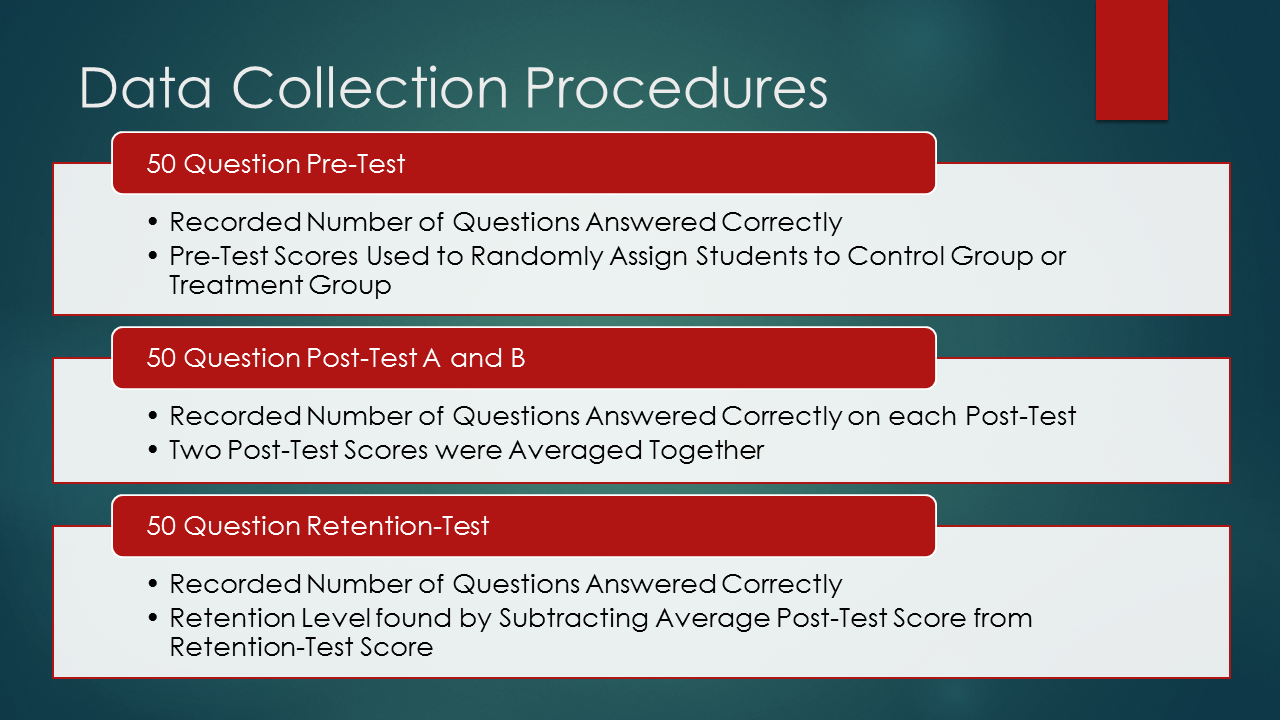
Data Analysis Procedures
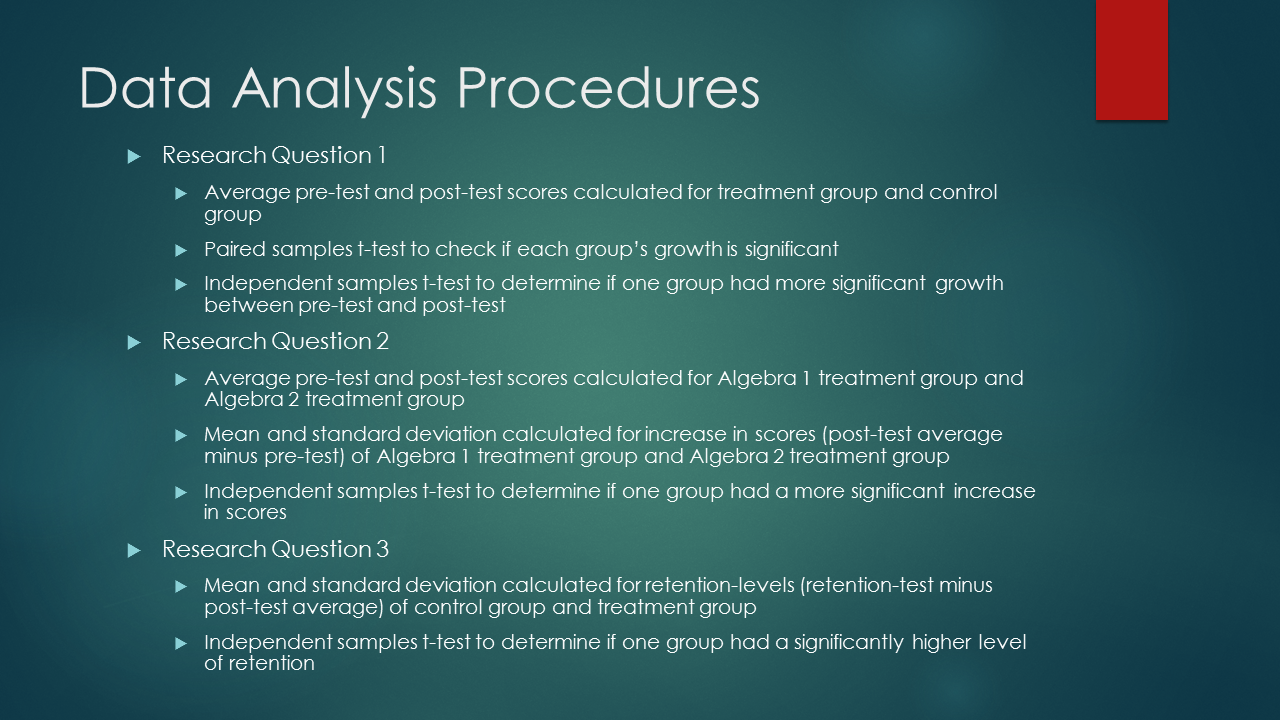
Data Screening
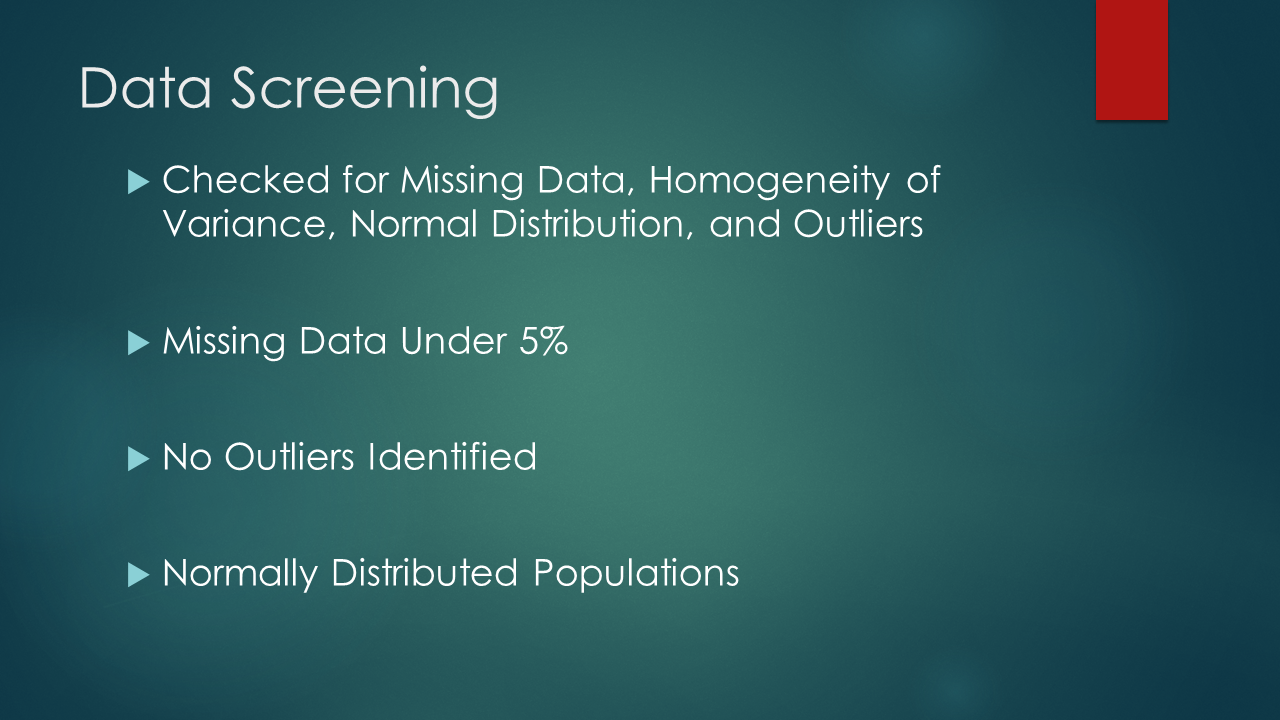
Results
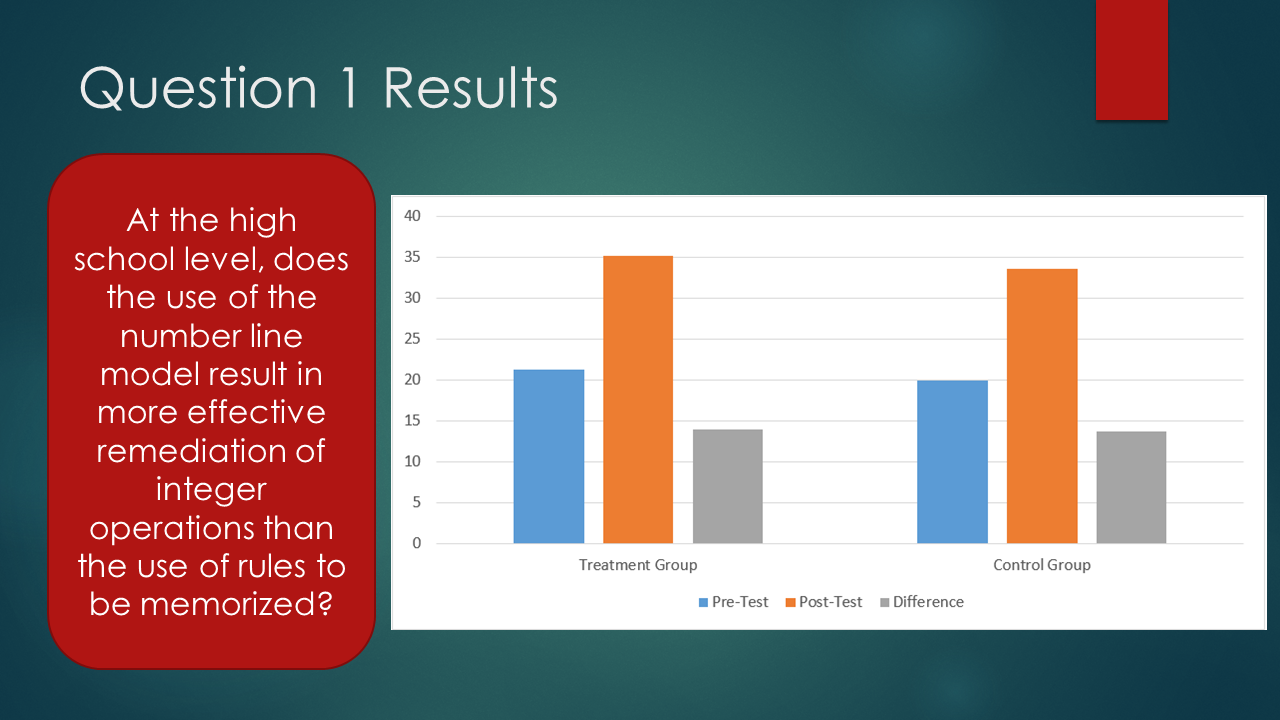
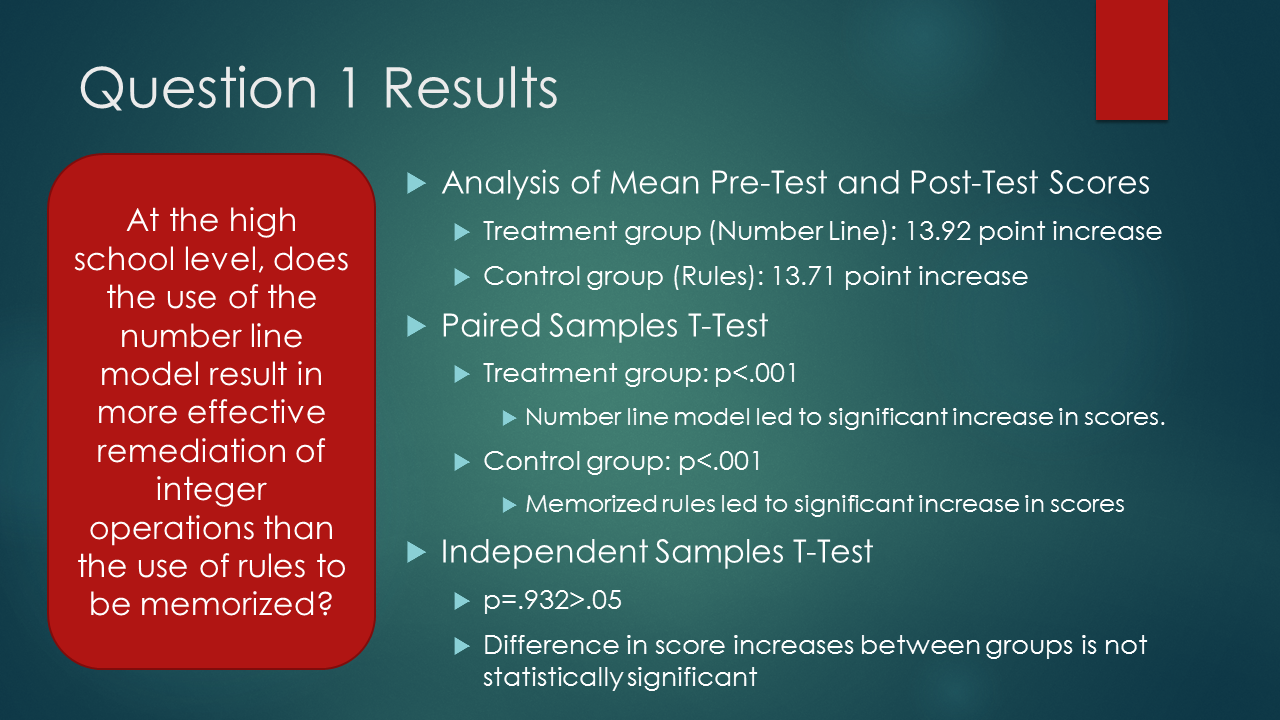
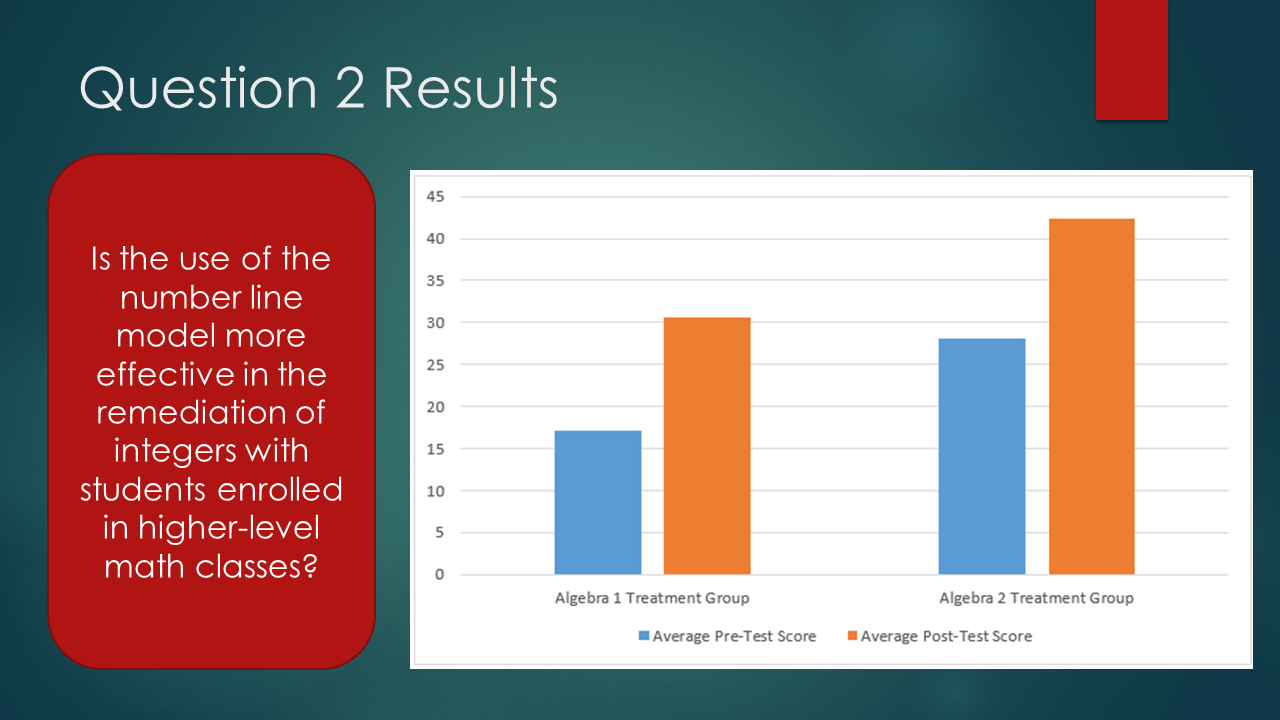
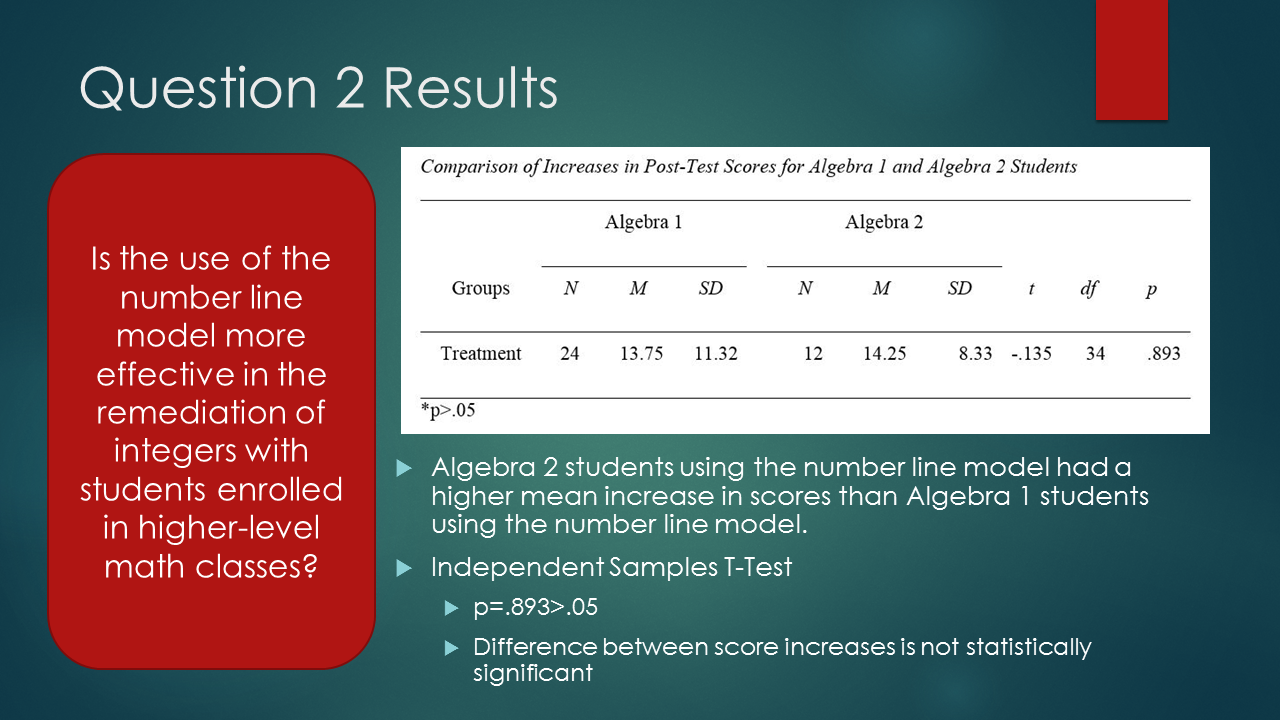
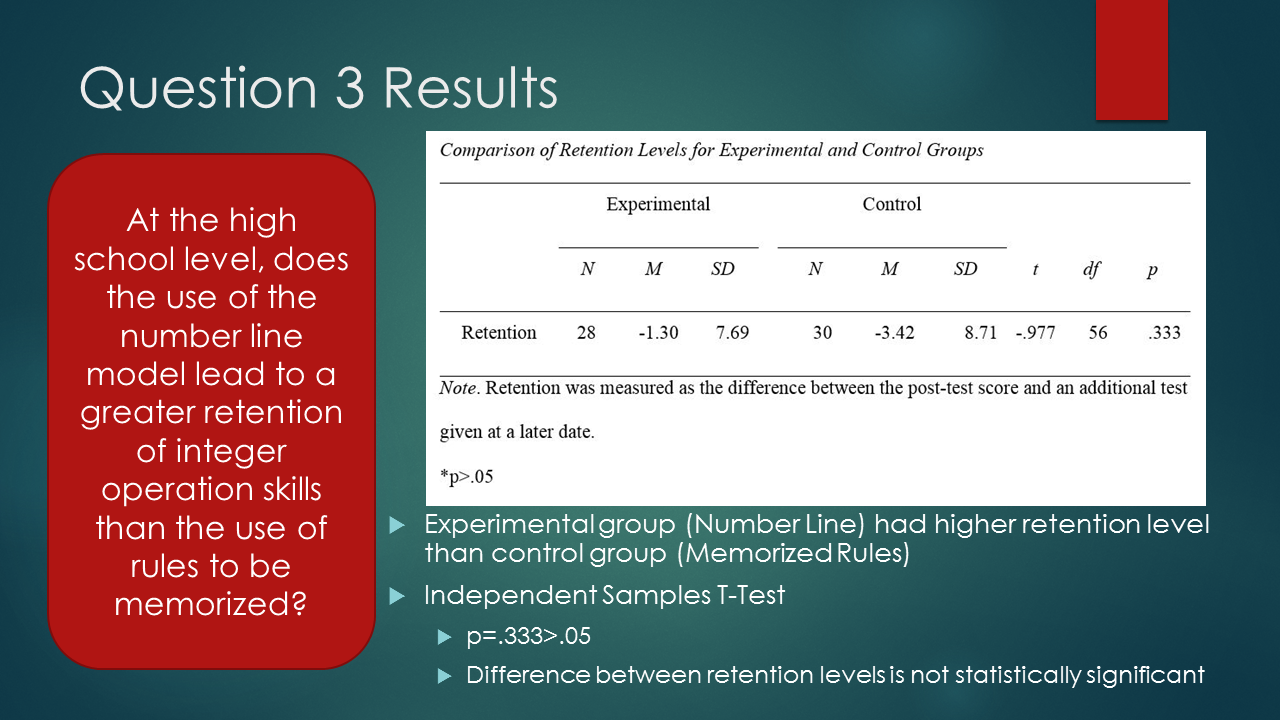
Major Findings
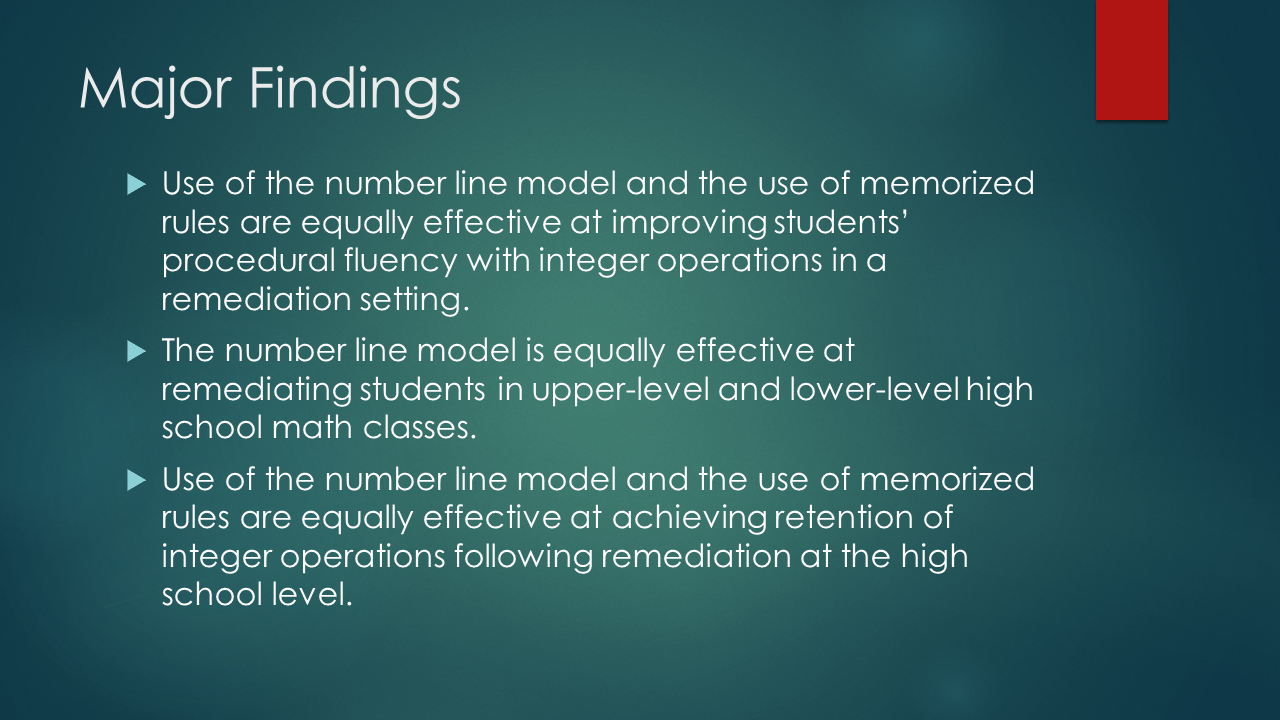
Limitations
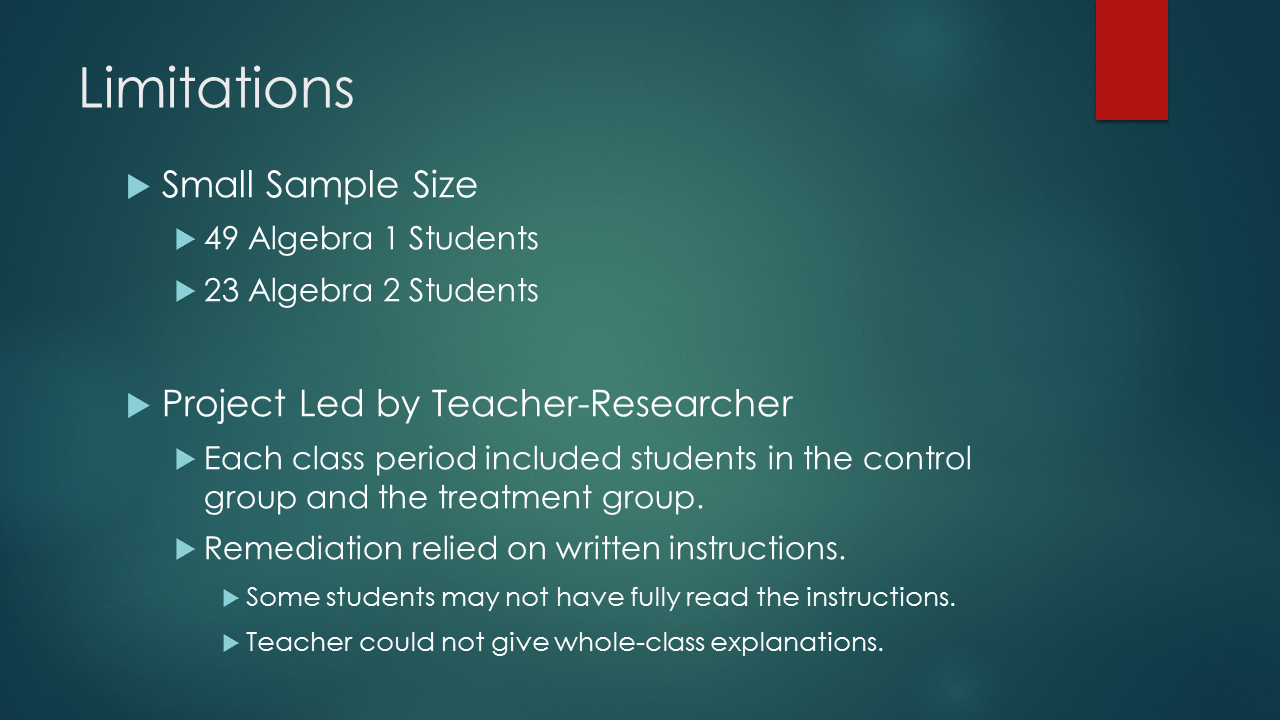
Ideas for Future Research
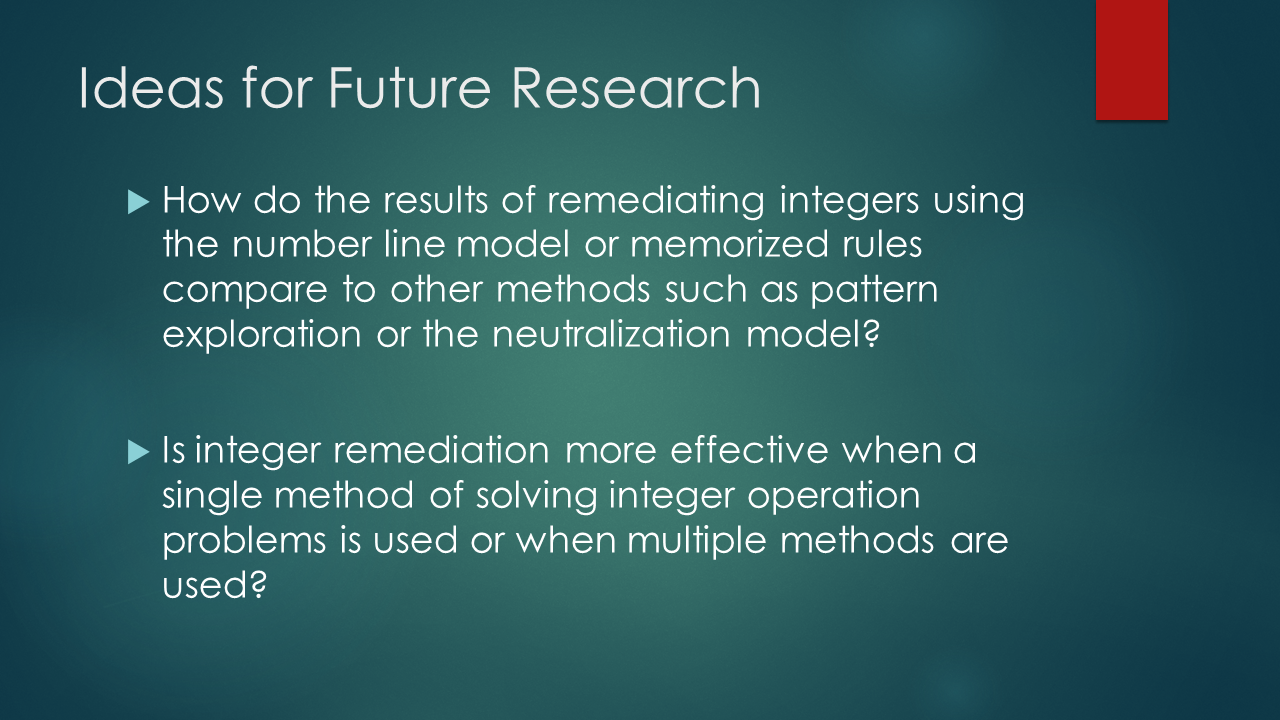

Summary
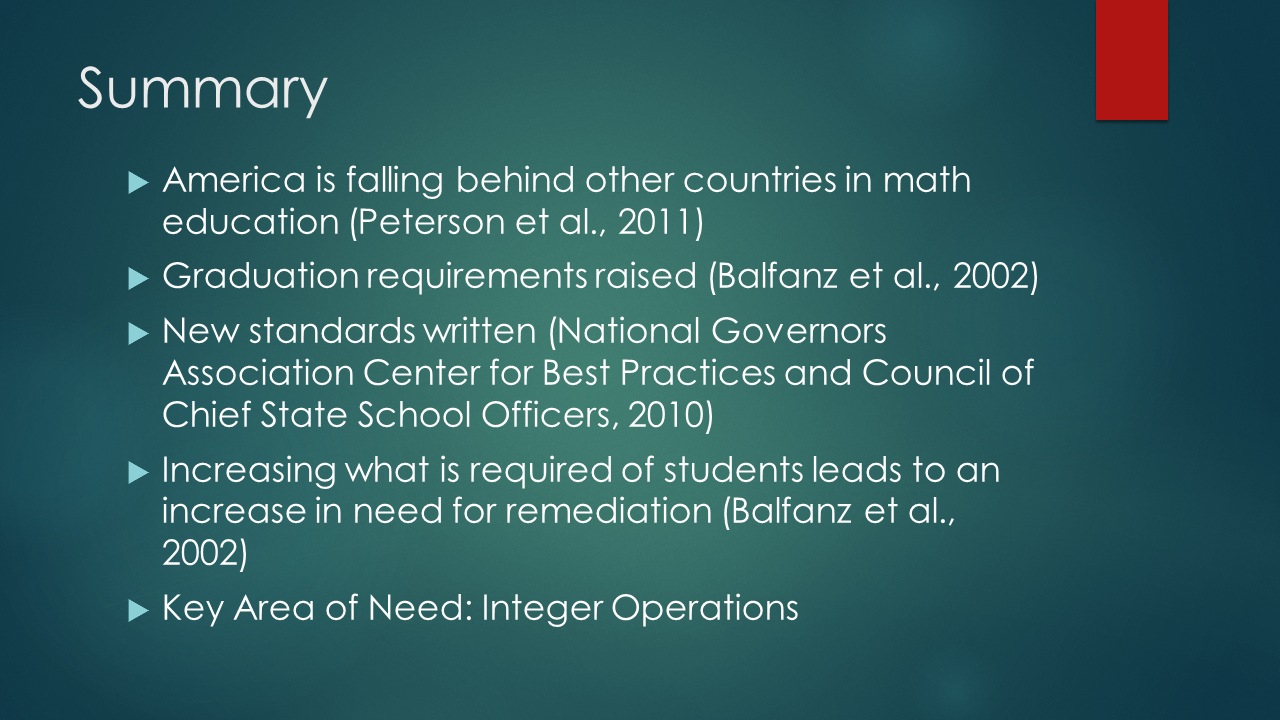
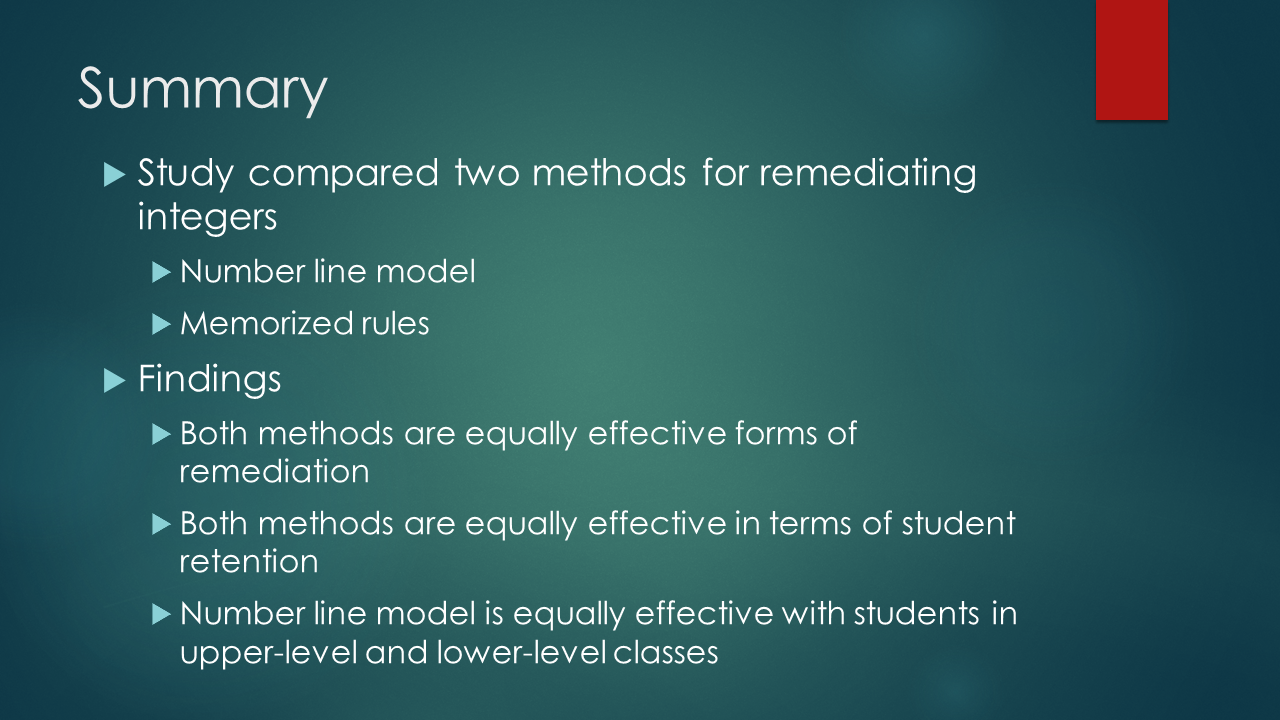
Implications to Classroom Teaching
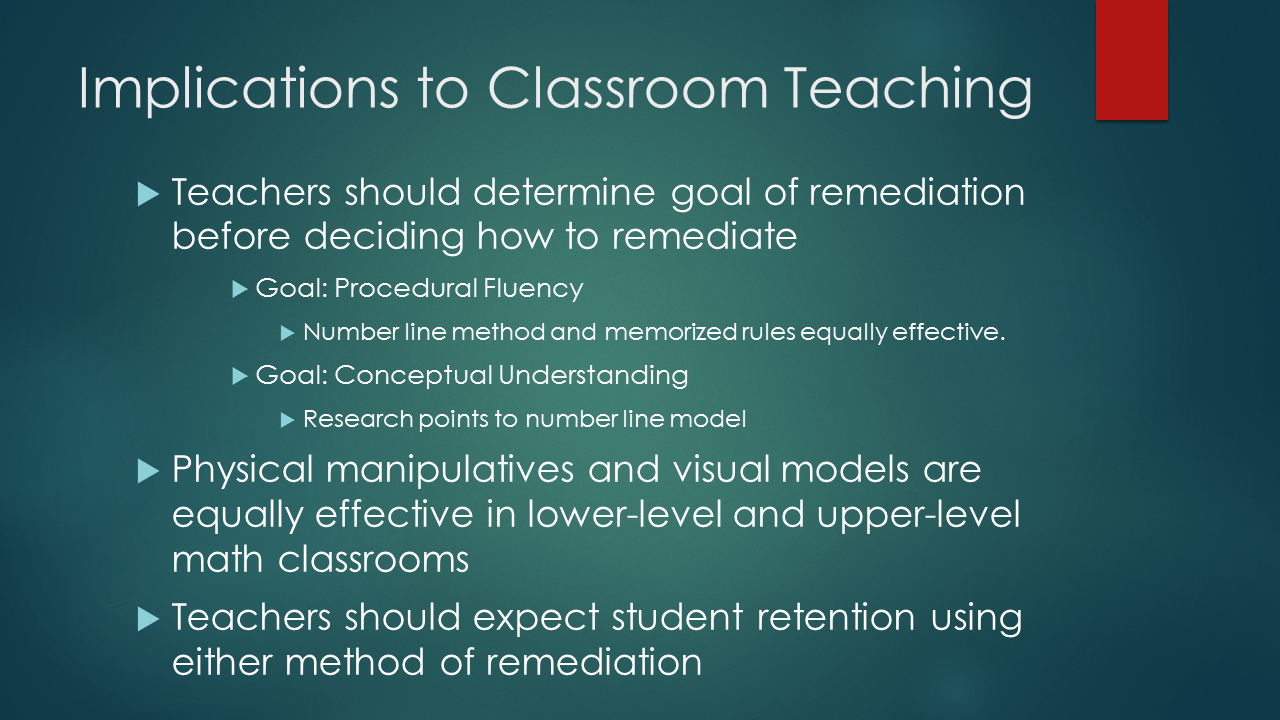
References
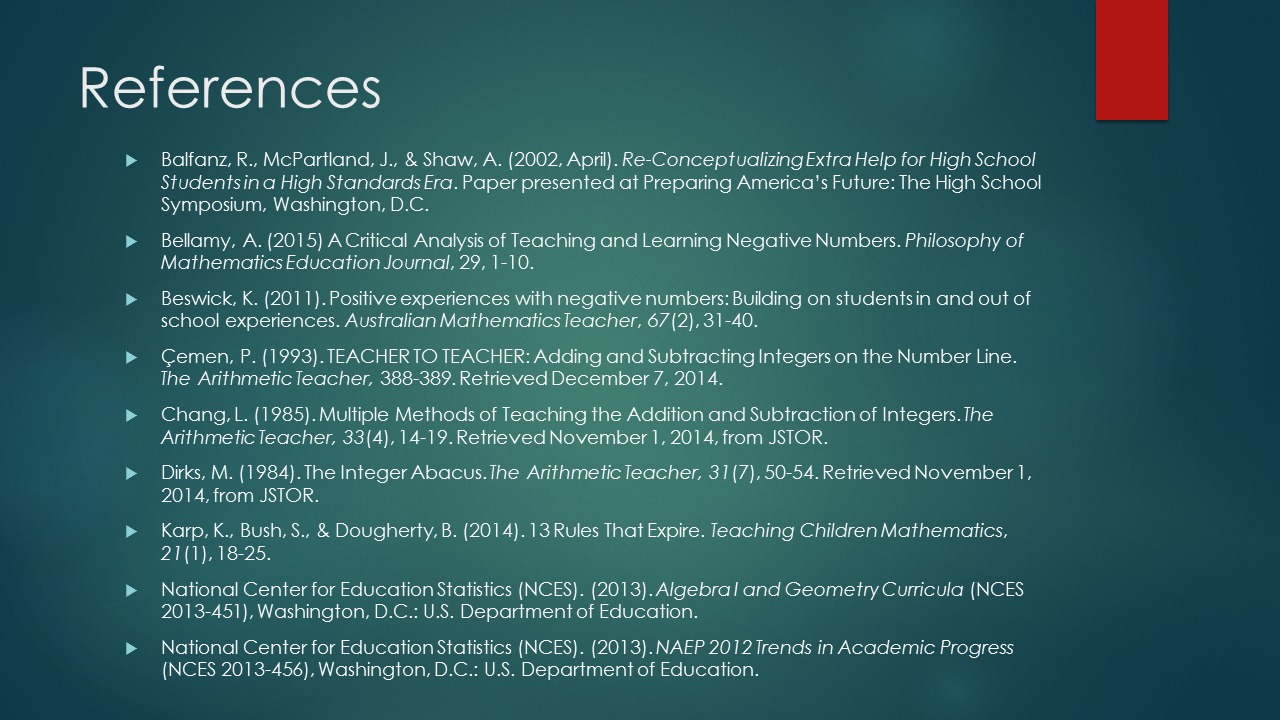
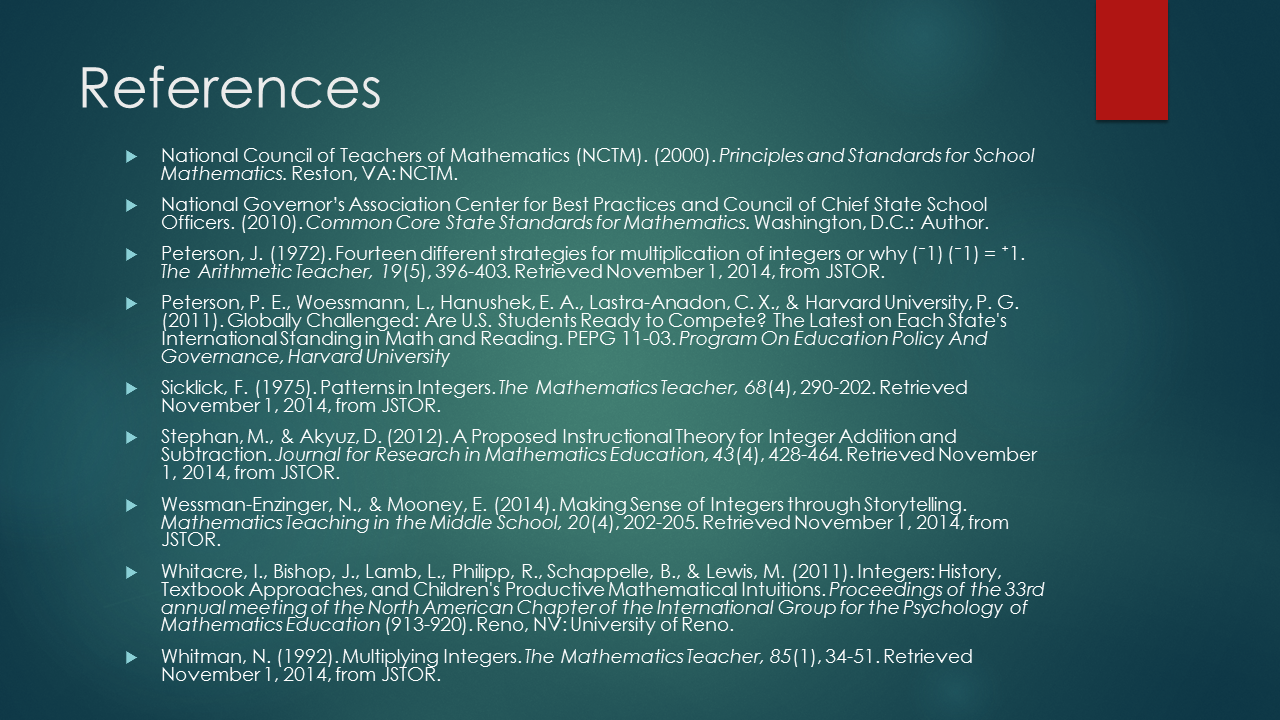
If you read this far, can I just say thank you?
I was disappointed that none of the results from my research were statistically significant. I really wanted my research to come out and say that the number line model trumps memorized rules for integer remediation. My research did show that the students who used the number line model made greater gains that the students who used memorized rules. I think that if my sample size would have been larger that there’s a chance the results could have been statistically significant. Or maybe that’s just wishful thinking…
Download Action Research Project – Investigating Effective Remediation of Integer Operations at the High School Level
Integer Operations Remediation Materials
Click here to Download
Integer Operations Flashcards (PDF)
4510 downloads – 8.16 KB
Click here to Download
Integer Operations Pre-Test (WORD)
1304 downloads – 14.75 KB
Click here to Download
Integer Operations Post-Test A (WORD)
1199 downloads – 14.85 KB
Click here to Download
Integer Operations Post-Test B (WORD)
1185 downloads – 15.01 KB
Click here to Download
Integer Remediation – Number Line Approach (PDF)
1438 downloads – 277.53 KB
Click here to Download
Integer Remediation – Rules Approach (PDF)
1400 downloads – 282.25 KB
Click here to Download
Integer Reflection Sheet (PDF)
1193 downloads – 272.95 KB

